Zephyr
From the Kansas Historical Society | Autumn 2025
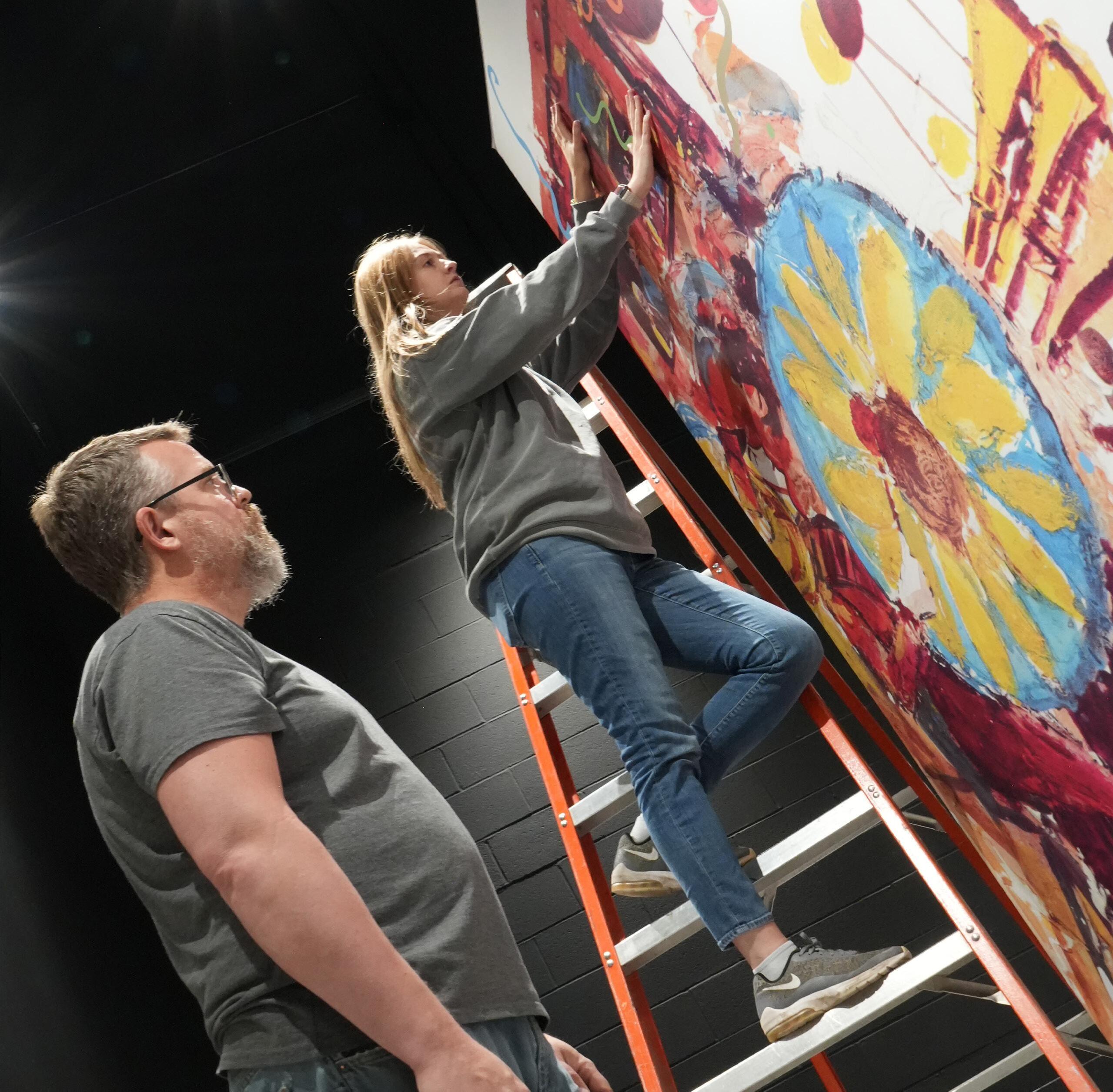

From the Kansas Historical Society | Autumn 2025

Reopening November 22, 2025
All new exhibits, new special gallery (more on page 12)
At long last we are happy to announce that the new museum gallery will open to the public on November 22, 2025. Grand reopening festivities feature many special guests, including Tribal representatives and our emcee, WIBW-TV’s Melissa Brunner. Artists, interpreters, music performances, and food trucks will also be part of the celebrations. Please join us!
You will note that Zephyr now being produced quarterly. There are a few reasons for this, the most important being when the production of the March/April issue was finalized, we had not yet received our approved federal funding, the Historic Preservation Fund (HPF), for staff and operations of the State Historic Preservation Office as well as a host of other preservation activities, including partial funding for Zephyr
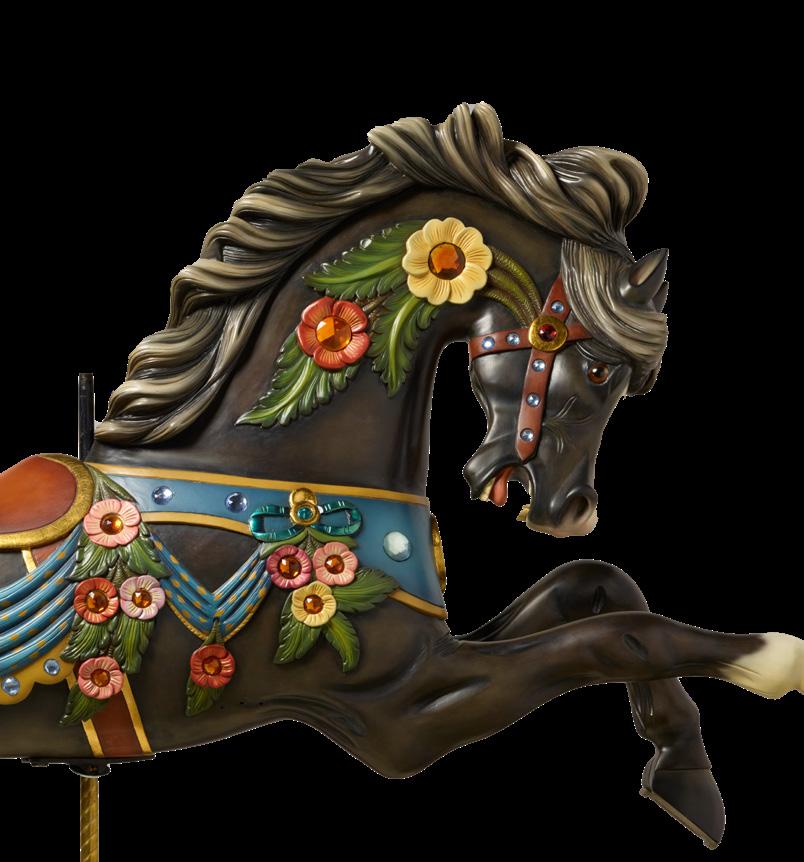
Bobbie Athon
ART DIRECTOR/DESIGNER
Laura Paige
CONTRIBUTING WRITER
Brenda Kipp
6425 SW 6th Avenue
Topeka KS 66615-1099
Please send change of address information to the above address, email kshs.zephyr@ks.gov, or call 785-272-8681, ext. 250.
Partial funding provided by the National Park Service, Department of the Interior. The contents and opinions do not necessarily reflect the views or policies of the Department of the Interior, nor does the mention of trade names or commercial products constitute an endorsement or recommendation by the Department of the Interior. This program receives federal funds from the National Park Service. Regulations of the U.S. Department of the Interior strictly prohibit unlawful discrimination in departmental federally assisted programs on the basis of race, color, national origin, age, or handicap. Any person who believes he or she has been discriminated against in any program activity or facility operated by a recipient of federal assistance should write to:
Office of Equal Opportunity, National Park Service 1849 C Street NW, Washington DC 20240. ©2025
What is the Historic Preservation Fund? HPF was established in 1977 to support the goals of the National Historic Preservation Act of 1966, which created the National Register of Historic Places among other programs. Funding is provided from Outer Continental Shelf Lands oil and gas lease revenues, not tax dollars, and an amount is appropriated annually by Congress to State Historic Preservation Offices (SHPO). Kansas has received approximately $1 million annually for the past few years under the most recent apportionment formula. These funds help pay for the staff of the SHPO and must be matched 40 percent by state funds. At least 10 percent of the award must be subgranted to local communities with certified preservation programs. Subgrants are awarded for surveys of historic properties, National Register nominations, walking tour brochures, preservation workshops, and other preservation activities.
In early March, Matthew Chappell, deputy director of KSHS, Katrina Ringler, Cultural Resources Division director, and I attended the annual meeting of the National Conference of State Historic Preservation Officers (NCSHPO) and met with our congressional delegation to discuss the importance of the Historic Preservation Fund in preserving historic Kansas properties. The 2025 funds were authorized in the continuing resolution passed by Congress in March; however, the funds were not released to state and Tribal preservation offices until mid-July. We greatly appreciate the support of our senators and representatives for
cover image: Exhibits Director Nate Forsberg, left, and Exhibits Designer Anne Dorcey, right, put finishing touches on the museum’s new special exhibit, Celebrating Kansas!, guest curated by Kansas! magazine’s Andrea Etzel. See story page 12.
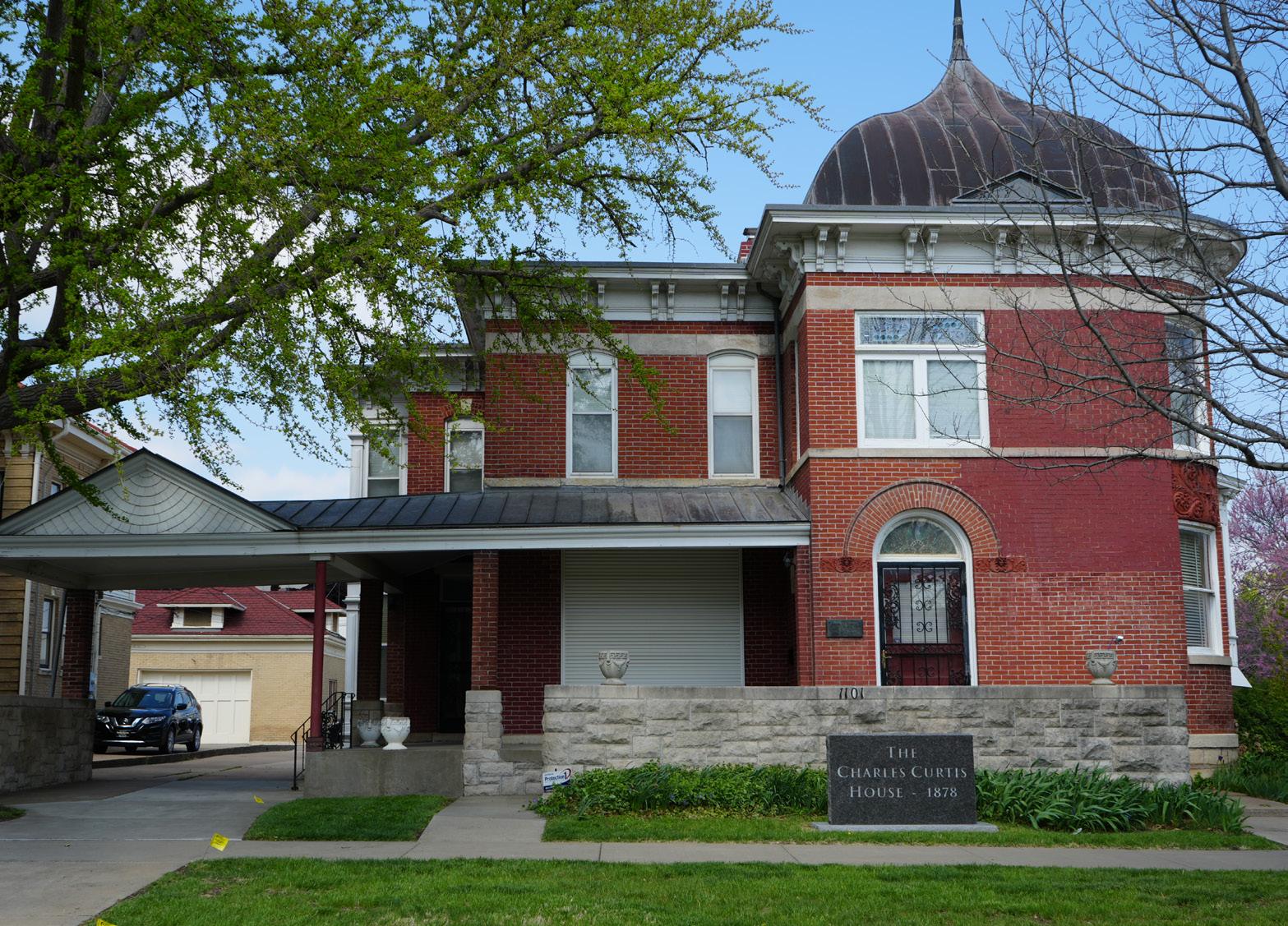
One of the many preservation activities included in the Historic Preservation Fund is the state preservation conference. Elsewhere in the issue you will find a recap of the conference, which was held in Topeka in May. One of the highlights of the conference was an evening reception at the Charles Curtis House, which leads us to another long-awaited announcement: The Charles Curtis House has been acquired as the newest state historic site! To recap, this acquisition was first authorized by state statutes in 1986, and the 2024 state legislature provided $300,000 to fund the purchase. This year we are seeking operational funding from the legislature, and we are already busy planning new exhibits for a future opening. Stay tuned for more details about this exciting new opportunity!
We are excited to report that we have been awarded two Save America’s Treasures Grants! One is a $412,500 grant to restore the west building at Shawnee Indian Mission State Historic Site in Fairway. The grant requires a dollar-for-dollar match (the total project will cost $825,000), and we will be utilizing a combination of privately raised donations and state funds.
The grant-funded project will enable the west building, the oldest of the three historic buildings at Shawnee Indian Mission and the second oldest extant building in Kansas, to be open to the public for interpretation, education, and events. The project will remove historically inappropriate features and materials; repair extant but damaged historic materials; and restore missing historic materials and features based upon historic photographs, documentation, and physical evidence following the Secretary of Interior’s Standards for the Treatment of Historic Properties under the preservation treatment guidelines. Outdated mechanical, electrical, lighting, and plumbing systems will be replaced with less
obtrusive systems, and the first floor will be made ADA accessible. While the east and north buildings have been rehabilitated and reinterpreted over the years, the west building has yet to be completely restored or open to the public. The project is expected to be completed in three years.
Fundraising is underway with assistance from our partnership with the Shawnee Indian Mission Foundation. Find more information online about Shawnee Indian Mission State Historic Site at bit.ly/3J2nJiH. Our second Save America’s Treasures Grant for $37,000 will conserve two Civil War national battle flags carried by the Eighth Kansas Infantry in the museum collection. Revered symbols of Kansas’ contributions to the Union cause, the flags bear the scars of war, including bullet holes, stains, and fabric damage. The Eighth Kansas Infantry participated in the battles of Chickamauga, Chattanooga, and Siege of Atlanta.
Conservation is vital to stabilize their fragile condition and prepare them for display in the museum’s newly renovated permanent gallery. The flags were furled and donated by vetrans to the Historical Society. Too brittle to unfurl, they have been stored in acid-free tubes for more than 50 years.
The Textile Preservation Associates, Inc., nationally recognized experts in historical textile preservation, will lead the conservation effort. This includes stabilization and exhibition treatment aligned with federal preservation standards to ensure long-term care and accessibility. The flag conservation project is expected to be completed within two years to be enjoyed by future generations. Learn more about the Kansas Museum of History flag collection at bit.ly/3IIVW6V
The Save America’s Treasures Grant program was established by the federal government in 1998 to celebrate America’s premiere cultural resources in the new millennium. More than 20 years later, the grant program has awarded more than 1,300 grants to projects across the United States.

Finally, in late September 2025, we received notification that we had been awarded a 2024 Native American Graves and Protection and Repatriation Act (NAGPRA) Grant for more than $14,000 and a 2025 NAGPRA Consultation and Documentation Grant for $100,000. Previously, we had been awarded a 2023 NAGPRA Consultation and Documentation Grant that allowed the agency to hire a NAGPRA coordinator, Anna Romans, and to support travel costs for Tribal consultation on NAGPRA related remains and items. Through these grants, our NAGPRA team, which consists of Anna and State Archeologist Dr. Nikki Klarmann, we can continue supporting consultation costs for Tribes as we work to meet the requirements of the 2024 NAGPRA regulations.

Patrick Zollner EXECUTIVE DIRECTOR, STATE HISTORIC PRESERVATION OFFICER
Bobbie Athon, MS, Director of Communications

With concerns of deterioration and to preserve its “unusual historical interest,” the Kansas legislature acquired the Old Shawnee Mission site in Fairway by eminent domain in 1927, designating it to be managed by the Kansas Historical Society. The local community continued to provide exhibits and tours of the site in the 1930s and 1940s.
The Kansas legislature appropriated operational funds for First Territorial Capitol in Pawnee, near Fort Riley, in 1929.

Kansas Historical Society Secretary William Connelly faced a challenge with the Goss Bird Collection on display in the Memorial building museum in Topeka. Connelley had earlier banned any of the living animals that were part of that collection. He began the task to transfer this collection to another facility which was not completed until many years after his death. Eventually the birds found a permanent home more appropriately with the University of Kansas Biodiversity Institute and Natural History Museum.

Secretary Connelley died suddenly in July 1930 and Kirke Field Mechem was elected as the fifth secretary of the Kansas Historical Society that October. He launched the Kansas Historical Quarterly in 1931; Mechem was a driving force in the Kansas Historical Markers program, which launched in 1938 when the first of 56 markers, “The Indian and the Buffalo,” was installed near Garden City.

Among Mechem’s publications was The Mythical Jayhawk, released as part of the Kansas Historical Quarterly in February 1944. Written tongue in cheek to explore the legend, the content proved so popular it was later reprinted as a standalone booklet.
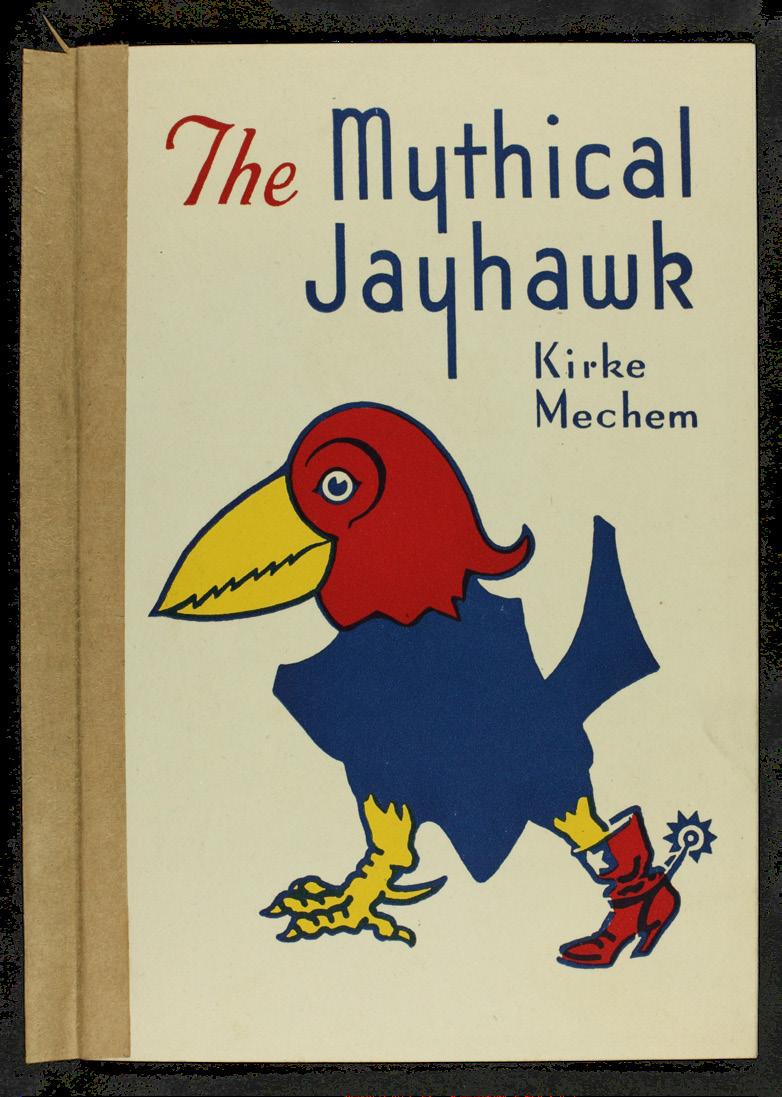
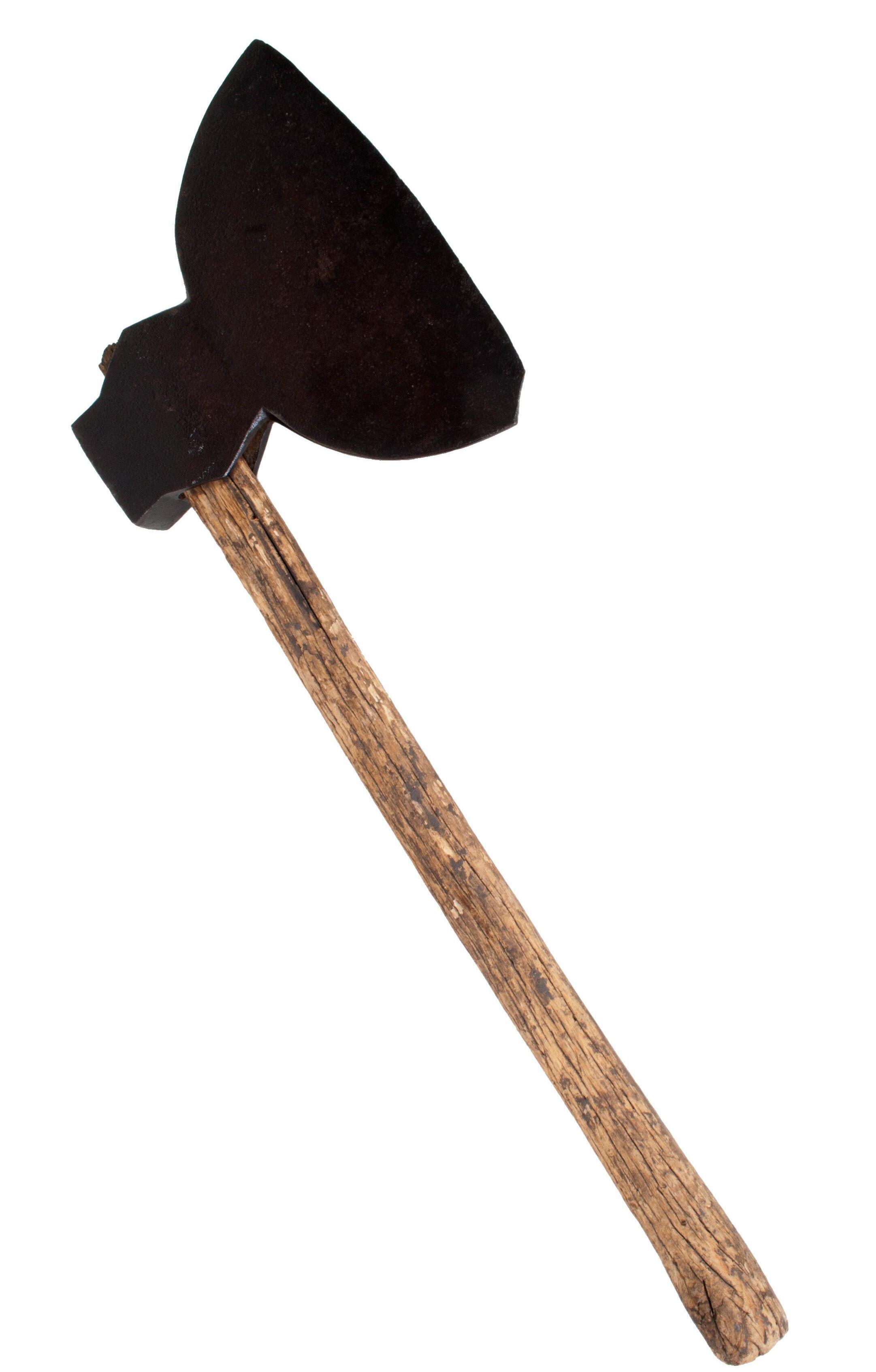
These collections were among the many received during Mechem’s administration from 1930 to 1951.
Carry A. Nation was a nationally recognized temperance advocate known for her “hatchetations” before she entered Jones Used Hardware Store in Topeka in 1901. She asked Robert Scott, a store employee, for a hatchet and he provided her with this steel broad ax. The ax was later acquired by the Woman’s Kansas Day Club, which donated the item to the Kansas Historical Society in 1933.

The Billard family donated Longren No. 5 to the Kansas Historical Society in memory of Philip Billard, who served as a test pilot in France during World War I and was killed when his engine stalled in 1918. The pilot flew this pushertype biplane after crashing his Longren Model G. Pictured from left are Kirke Mechem, U.S. Senator Arthur Capper, Mayor Herbert G. Barrett, and Robert T. Billard at the July 1938 biplane presentation. Longren No. 5, will be featured in the Kansas Museum of History’s new exhibits.
Weekly and daily newspapers were continually received, processed, and bound for the collections, like this weekly, The Wyandotte Echo, founded by Isaac F. Bradley, Sr. The Historical Society installed a microfilm lab in 1946 and began filming the old and fragile newspapers for future access.

This portfolio belonged to Charles E. Fox, the son of a clergyman, who came with his family to Doniphan County about 1855. The portfolio was donated to the Kansas Historical Society in 1948.
This large symmetrical-shaped steel skeleton key dated to 1884 was reportedly used to unlock the Dodge City Jail. It was donated to the Kansas Historical Society in 1935.


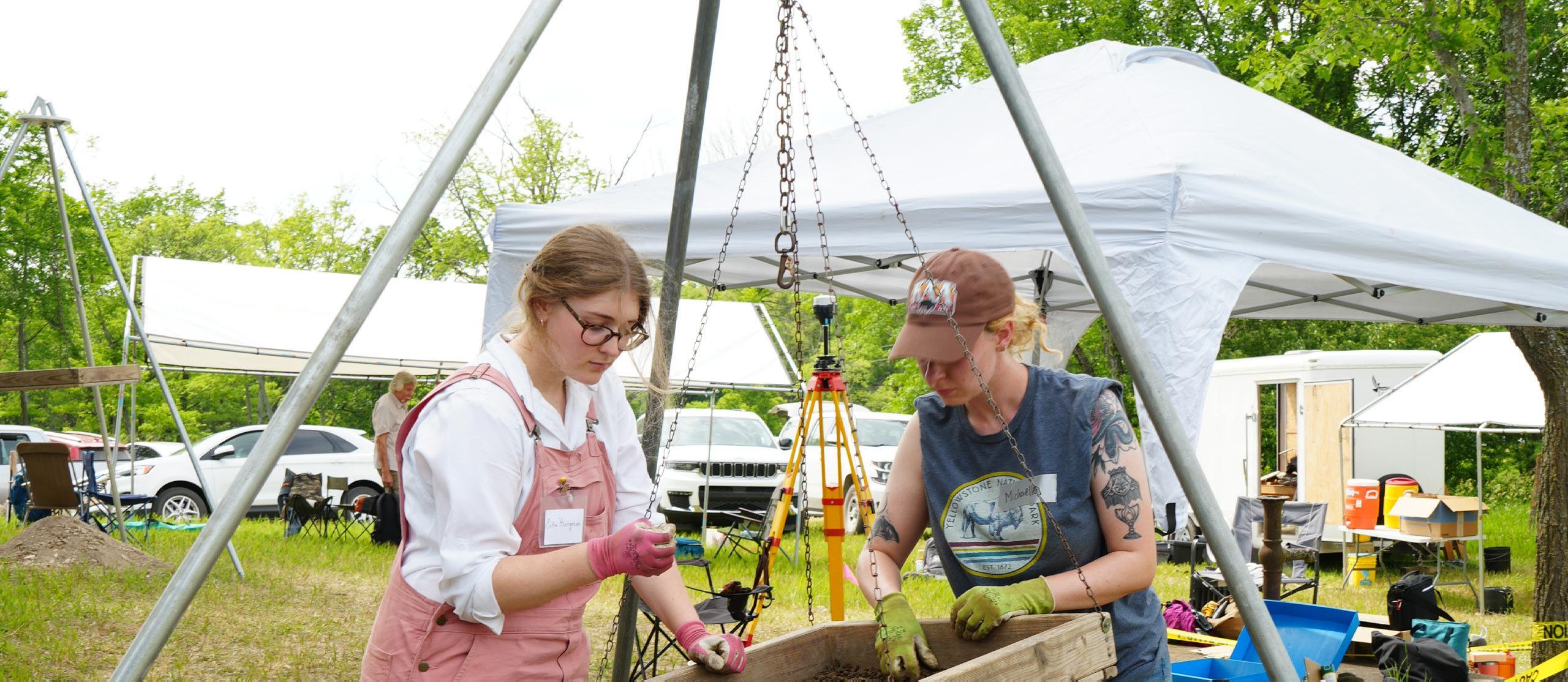
Protecting and understanding the archeological resources of Kansas— working with local, state, and tribal entities, offering educational programming, and conducting and sharing research.
The 2025 Kansas Archeology Training Program (KATP) was held near Lecompton on June 6-15, 2025. Here former territorial Governor Frederick P. Stanton built a mansion between 1858 and 1859, deemed the “most capacious and costly” of its day in the territory. After Stanton left Kansas, Mount Aeolia, as the mansion was called, was occupied and owned by local families, Civil War refugees, and former Governor Harry H. Woodring. The goal for this year’s field school was to learn as much as possible about the structure, past occupants, and their everyday lives. Details about the property history uncovered through archival research of newspapers, government records, and historic maps, helped determine the onsite investigation.
Henry B. Rogers owned the property in 1895 when he provided the earliest known description in person at the mansion for Historical Society Secretary Franklin G. Adams. “It is 50 by 50 feet on the ground, and three stories high, including the basement story. The rooms in the basement on the east side are a 28-foot dining room, a kitchen and pantry. On the west side two rooms and a stairway; and a broad hall through the entire basement from north to south.”
The second floor had seven sleeping rooms and an entrance to the attic with a lookout balcony. The house had a total of 10 fireplaces.
Stanton and his family occupied the mansion until they returned to Washington, D.C., in 1865, yet he continued to own the property until 1867. Ownership and occupation of the property is unclear between 1867 and 1884. What is known during this time is H. J. Strickler, Stanton’s son-in-law, advertised the property for lease in 1867; the Douglas County plat map shows Stanton as the property owner in 1873.
Civil War refugees from the South are believed to have occupied the mansion; the exact dates and occupants are unknown. The original exported wood that once adorned the mansion was burned during that time. Late occupants replaced the trim, using locally-sourced oak and black walnut.
Civil War refugees from the South are believed to have occupied the mansion; the exact dates and occupants are unknown.
Rogers told Secretary Adams in 1895, that E. F. Morrill bought the property from a man named Wright, and Morrill then sold it to Henry B. Rogers in 1884; the dates of the earlier transactions are unknown. Rogers died in 1896 and the property was split between his two sons, Alph and Robert. Alph inherited the mansion and western portion of the property; Robert inherited the eastern portion of the property.

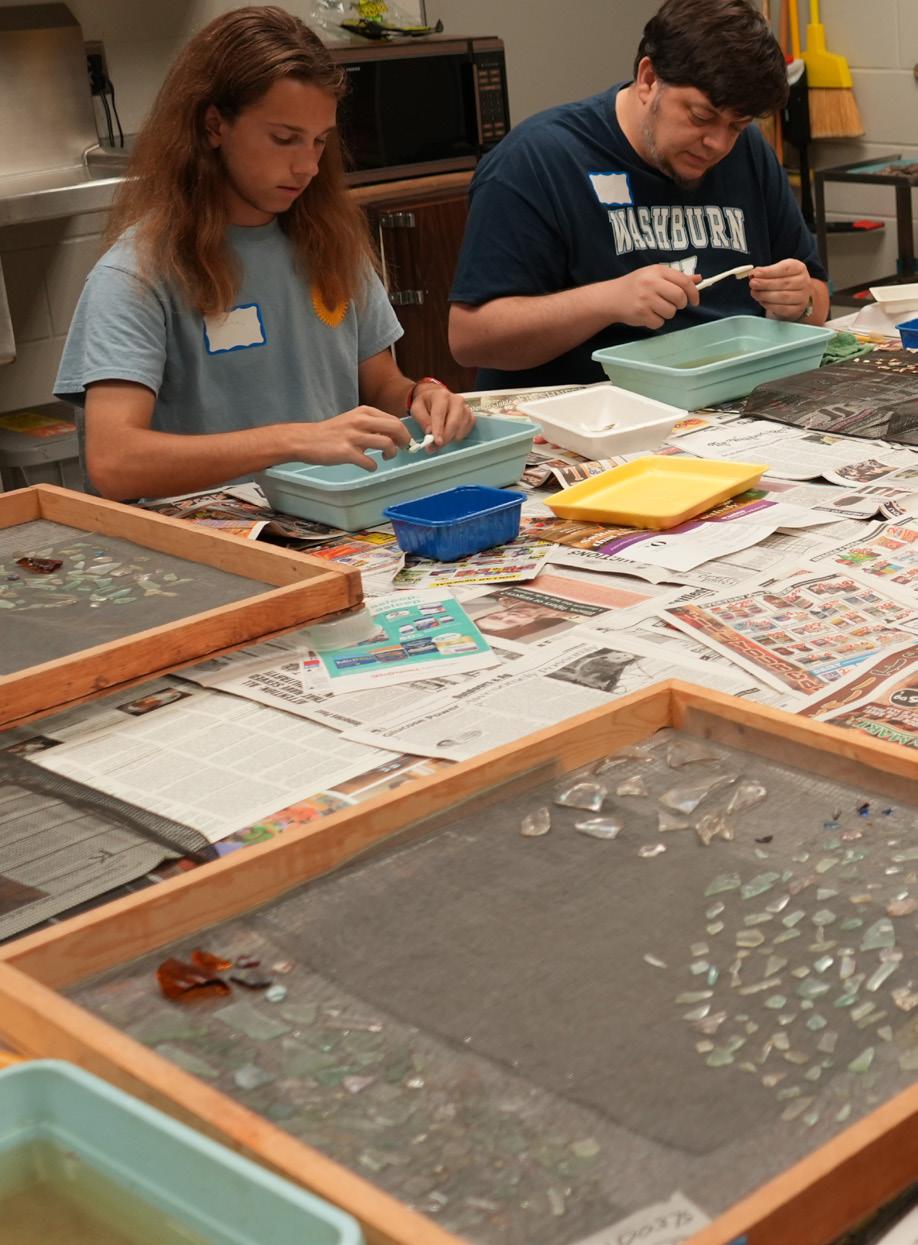
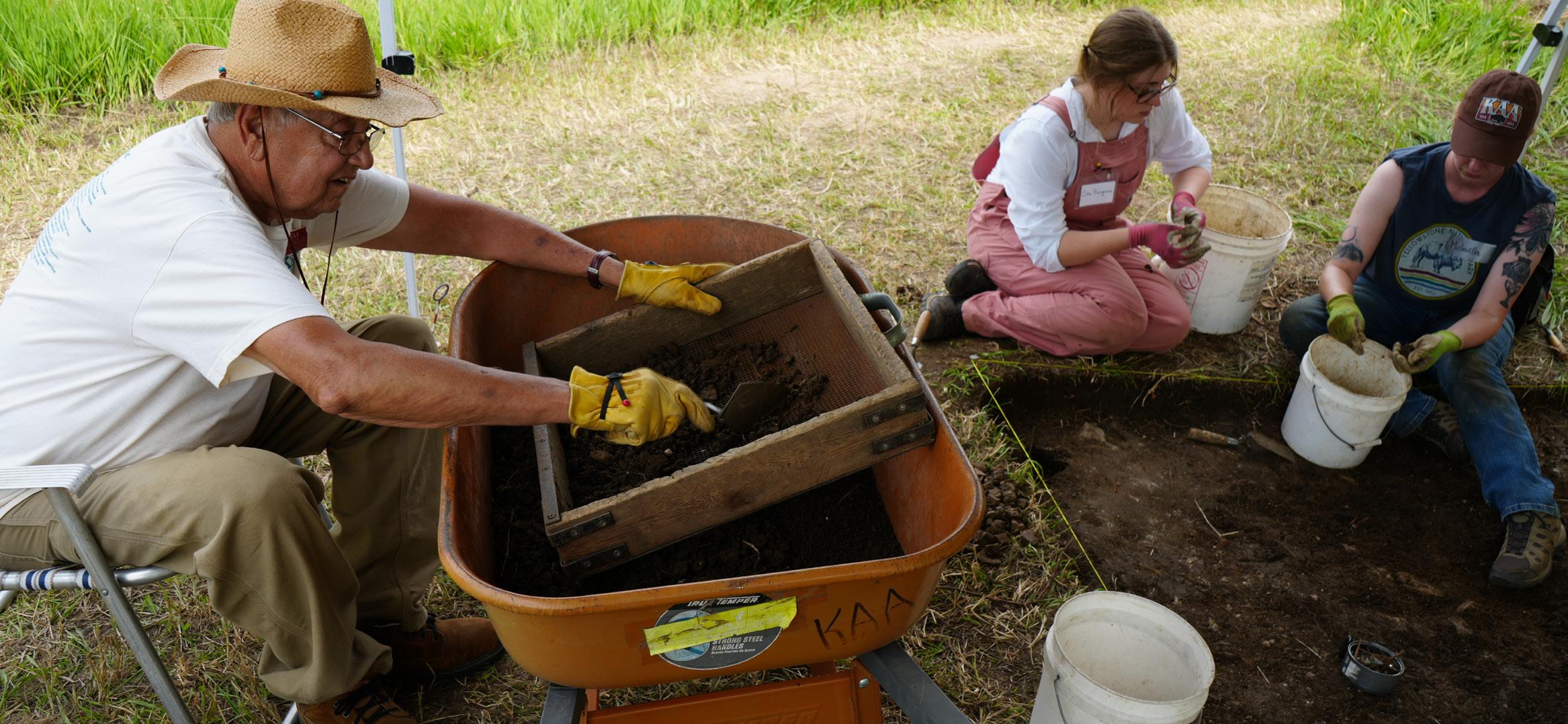
In 1915, Alph Rogers sold the mansion and his western property to James E. Daniels. The next known owner, E. W. Sloan, rented the mansion to multiple generations of the Morris family. Numerous families occupied the building during its decline.
In 1940, former Governor Harry H. Woodring, purchased the property when he returned to Kansas after serving as U.S. assistant secretary of war. He hoped to restore the mansion to its former glory. Restoration proved too costly and Woodring sold the property in 1951. The owner eventually demolished the home for safety reasons. All that remains of the mansion are parts of the basement and portions of some walls. Current owners, Pieter and Lynda Berendsen, purchased the property and ruins in 1975.
The field school drew 165 participants, who contributed 4,143 volunteer hours, 1,299 in the lab and 2,844 in the field. This year, we also partnered with Dr. Laura Murphy, associate professor of anthropology, at Washburn University in Topeka, who served as principal investigator. Dr. Murphy’s field school students had already begun researching the material. These results were presented at an open house in Lecompton on June 26.

Paige has loved history for as long as she can remember. Her family often visited various history-related museums and attractions when she was growing up, her favorite being Old World Wisconsin, with its interactive live history exhibits. Her first college anthropology course further inspired her to study anthropology. She earned her bachelor’s degree in anthropology
from the University of Wisconsin-Madison with a certificate in archeology. In May 2024, she earned her master’s degree in anthropology from Wichita State University before joining the Historical Society. Paige is excited to share her love of history and archeology with the public at events throughout Kansas as the public and outreach coordinator for the archeology department. One event that particularly thrilled her was the 2025 Kansas Archeology Training Program, where she served as the site supervisor. She believes this public program is a great way to involve people and excite them about Kansas history and archeology!

Preserving and protecting the state’s historic buildings, structures, and sites through financial assistance programs, technical guidance, and regulations; working with federal, state, and local communities and partners to interpret and preserve these resources.
Megan Maize, MS, SHPO Survey and Outreach Coordinator
The National Register of Historic Places is the nation’s official list of historically significant properties. The State Historic Preservation Office (SHPO) at the Kansas Historical Society administers this and the Register of Historic Kansas Places. In February 2025, the Historic Sites Board of Review met via Zoom to review 17 total properties. The board approved 15 properties (denoted with an asterisk, *) to list in the state register and recommended these be forwarded to the Office of the Keeper of the National Register of Historic Places in Washington, D.C. The board recommended one property, previously listed in the Register of Historic Kansas Places, to be forwarded to the Office of the Keeper. The board listed one property solely in the Register of Historic Kansas Places.


The Bank of Powhattan started in 1897 with $6,000 within the Kansas Kickapoo Tribe’s reservation lands. Sam Buedahl built the current structure in 1906. A prominent community member, Buedahl was a cashier at the bank.
The Romanesque and Commercial style two-story brick building has curved glass windows and specially made curved bricks for the turret on the southeast corner. The bank occupied one side of the building, the other served various uses. An auditorium filled the second floor. Currently, there is a post office on first floor; the second floor serves as a community hall. The bank building is nominated for its local social and community development history.
Pray Farmstead, Dickinson County*
The Pray Farmstead has 20 resources built from 1875 to 1933. Of theses, 19 are contributing to the nomination; one is noncontributing. Brothers Alfred and Joseph Pray bought the property between 1872 and 1894. Alfred built his farm on the west half of a section and Joseph built on the east side of the section. The Pray family owned the farmstead for 150 years until 2021, when the farmstead was donated to The
Nature Conservancy. The Pray Farmstead is being nominated for its local significance to agriculture and architecture using the the Multiple Property Document Historic AgricultureRelated Resources of Kansas.
Baldwin City Downtown Historic District, Douglas County*
The Baldwin City Downtown Historic District has 54 properties with 31 contributing; 23 noncontributing. Baldwin City began after the establishment of Baker University in 1858 and officially incorporated in 1870. An early building boom was followed by a devastating fire in 1893. As the downtown rebuilt, only all-masonry construction was used. Baldwin City continued to grow, and a period of “beautification” in 1966 brought updates to the downtown buildings. The residents continue to push for downtown improvements and community centers. The Baldwin City Downtown Historic District is nominated for its local community development and planning history as well as its architecture.
Methodist Episcopal Church, Jefferson County*
The Methodist Episcopal Church was designed by William F. Schrage and built between 1908 and 1910. Designed in the Richardson Romanesque style, it features a limestone foundation and basement with red brick and limestone detailing, and three stained-glass windows. The congregation began meeting in 1856; by 1860, there was a “little white church” that was shared with other denominations. That church became inadequate for the growing congregation and was moved from the site,with the current church built on the same lot. The Oskaloosa Methodist Episcopal Church is being nomination for its architecture as a Richardson Romanesque style building.
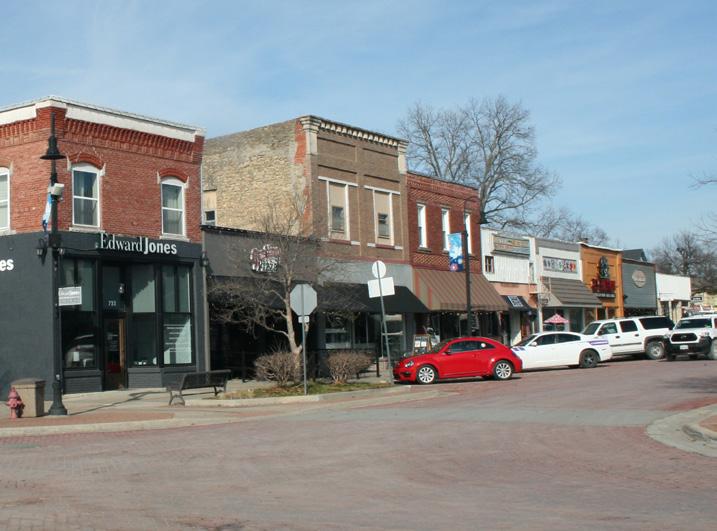

Brook, Hugh and Rachel, House, Linn County*
The Hugh and Rachel Brook House, a three-story Empire and Queen Anne style structure, was built in 1886. The Brook

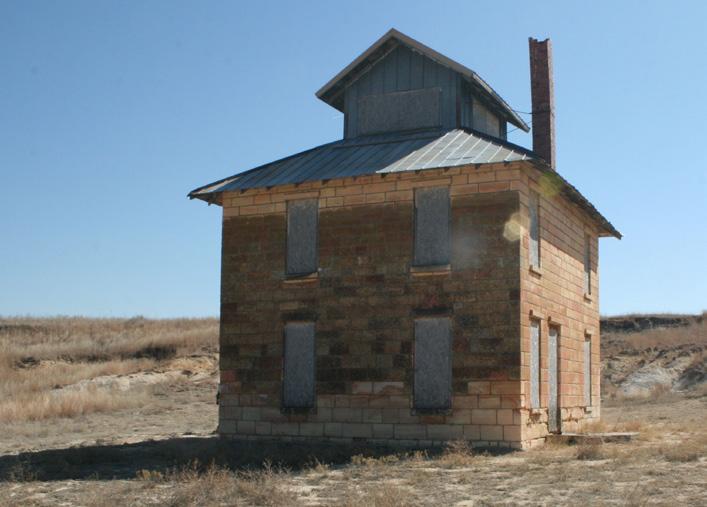

House has a mansard roof with red and yellow slate and 10 dormers. The porch has wood lattice work and turned spindles. Hugh Brook was a founding member of the Blue Mound town company in 1882 and oversaw construction of the Bank of Blue Mound. Celebration followed its completion in 1888, the “social event of the season” with more than 100 guests. The Hugh and Rachel Brook House is being nominated for its architectural style.
Bertrand House, Logan County*
Also known as the Cupola House, the Bertrand House was built by Louis Bertrand in the Oakley vicinity around 1930. This three-story locally quarried limestone house on concrete foundation has a central cupola or tower as the third story. Bertrand was a prominent wheat farmer with 800 acres planted in 1926. A newspaper notes in 1928 that Bertrand had planted 6,000 acres of hard winter wheat. His ownership by 1930 was estimated at 10,000 acres of farmland across Gove, Logan, Wallace, and Sheridan counties. The Bertrand House was purchased in 1999 by The Nature Conservancy as part of its larger holdings, the Smoky Valley Ranch. The Bertrand House is being nominated for its Vernacular style architecture.
McCarty, W.T. and Olivia, House, Lyon County*
The McCarty House was built in 1868 in the Queen Anne style, constructed for Judge William Thaddeus McCarty, wife Olivia, and daughter. Located in Emporia, the two-and-a-half story residence on stone foundation features weatherboard siding, large two-story bay windows, and leaded glass windows. The house originally had two bedrooms; additions were made as the family grew until around 1910. W. T. McCarty was a captain in the Civil War and a highly respected community member. The McCarty House is being nominated for its local history in architecture.
The Fowler and Baehr Buildings, also known as Fowler’s Feed and Grain, occupy two commercial buildings in Paola at 120 S. Silver and 118 S. Silver. At 120 S. Silver owner E.T Fowler operated the Feed and Grain shop until it was destroyed by fire in July 1907. Fowler rebuilt and had reopened by December 1907. The Baehr brothers bought 118 S. Silver in 1920 and shared a common wall with Fowler. The Baehr brothers leased their building to D.E. Hemenway Ford Agency. The two-story
brick buildings have minimally decorated parapets, with the Baehr Brothers’ building being taller. The Fowler and Baehr Buildings are nominated for local history of commerce.
The Ursuline Academy–Auditorium was built in Paola in 1916 in the Colonial Revival style as part of a 30-acre campus adjacent to a residential neighborhood. One of two remaining buildings of the academy, the auditorium is a three-story brick building with brick bearing walls, a raised one-half finished basement, and Classical revival ornamentation. The Ursuline sisters from Louisville, Kentucky, began the academy in 1894 to educate Indigenous students, who were then relocated to Oklahoma. Undeterred, the sisters educated the local population. The academy increased enrollment, leading to construction of the auditorium building in 1916. The Ursuline Academy Auditorium building is being nominated for its architectural style.
The John Waggoner Home within the Albany Historical Society property, in Sabetha vicinity, is a National Folk style farmhouse. The two-story farmhouse has an original limestone foundation, wood Dutch lap pine siding, and pine windows. The original log cabin was built by John Graham in 1857, an Underground Railroad agent, who used the log cabin as the waystation. After Graham died, the log cabin was sold to Waggoner in 1870. Destroyed by fire in 1889, the current farmhouse structure was built. The John Waggoner House is being nominated for its local history in exploration and settlement and for its architectural style.
The Pospishil Building in Luray was built in 1899 in the commercial Italianate style. Built with Post Rock limestone on a limestone foundation, the building features an intact Meskers façade with paired columns between the windows. Frank Pospishil, the builder, was a businessman who saw a need to develop main street. He constructed the building as a performance and business rental space. The Pospishil Building is nominated for its architecture as a Post Rock limestone building using the Multiple Property Document Post Rock Limestone Properties in Kansas, 1870-1948.



Paul Laurence Dunbar School, Saline County*
The Paul Laurence Dunbar School, in Salina, completed between 1921 and 1922, is a late 19th and early 20th century American Movement style school building. The two-and-a-half story utilitarian structure has a concrete foundation, frame, floors, and roof with brick veneer. The neighborhood was considered “the hub for the African American community.”


The schoolboard invited local Black students to name the school. They chose to honor famous African American poet, Paul Laurence Dunbar. School enrollment decreased in 1954 after the U.S. Supreme Court case, Brown v Board of Education. Families chose not to send students to the former segregated school, and it closed in 1956. The building was used by the board of directors of St. Francis Boys Home. The Paul Laurence Dunbar School is being nominated for its local history in education and for its architecture using the Multiple Property Document Historic Public Schools of Kansas.
Will G. Price Elementary School, Sedgwick County*
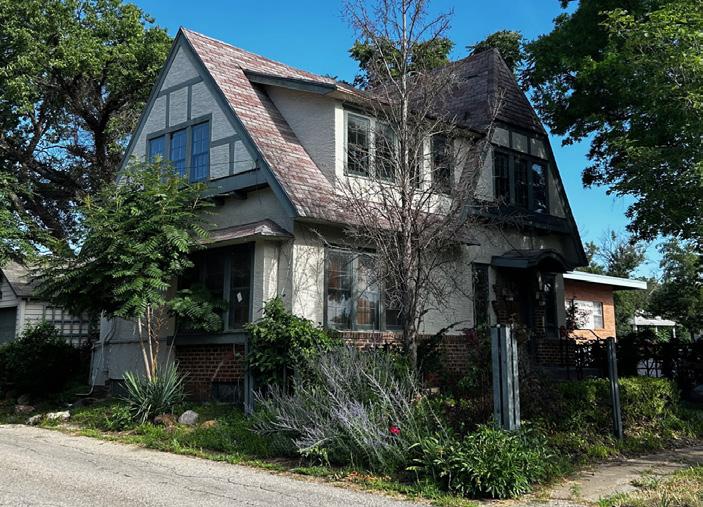
The Will G. Price Elementary School was built in Wichita in 1957 as a Mid-Century Modern architectural design. Price Elementary, a one-story concrete and steel structure with red brick and horizontallight windows, opened to 171 students for grades one through eight. Attendance grew until the 1960s, when the Wichita population decreased. Price and Harris schools were merged in the 1980s, creating Price-Harris Elementary School, then Price-Harris Communications Magnet in 1996, and was moved to the Harris campus. Alcott Academy moved into the vacant school building in 2006, later renamed Blackbear Bosin Academy. The Will G. Price Elementary School is being nominated for its local history for education and architecture under the Multiple Property Property Document Historic Public Schools of Kansas.
The Lucinda Todd House was built in 1924 as a Tutor Revival style building. The two-story house has stucco siding on the first floor and running bond brick on the second story. Lucinda and Alvin Todd moved into the current house in 1944. Alvin was a private secretary for the Menninger Foundation; Lucinda had taught at Buchanan Elementary School before her marriage. When their daughter, Nancy, started school, she crossed busy streets to board the bus
to her segregated school. Lucinda Todd, as secretary of Topeka’s NAACP, was integral in raising concerns about inequal policies. She was one of the Topeka plaintiffs on behald of her daughter in the Brown v Board of Education
U.S. District Court case., which merged with others in the U.S. Supreme Court case. The Lucinda and Alvin Todd House is being nominated for its Local and State history of civil rights and Black history, association with Lucinda Todd, and for its architectural style using the Multiple Property Document African American Resources of Topeka
The Gardner House was built in the Craftsman Bungalow style in 1921. The one-and-a-half story building has stucco siding, a nearly full-length porch, tapered wood columns, and brackets. Frederick Swanson arrived with his family from Sweden in Topeka in 1869. Frederick worked in his family’s construction business as a cabinet maker and sidewalk builder, before constructing this house where he would live. Dr. Riley and Ruth Gardner purchased the house in 1951. A research psychologist at the Menninger Foundation from 1951 to 1971, Dr. Gardner was director of the research studying cognitive control principle.
The Brown Brothers Garage and Store was built in the Vernacular commercial style in Mildred in 1919 and expanded in 1924. The one-story building is made of beveled concrete block with two garage openings and transoms. Newspaper accounts list the brothers’ garage business in 1919. They bought the adjacent lot in 1924 and added a hardware store, in operation until 1941. Their descendants owned the building until 2014. The building continues to be used to sell goods and as a community meeting place. The Brown Brothers Garage and Store is being nominated for its local history of commerce.
The Edwards Building in Larned was listed in the Register of Historic Kansas Places on October 5, 2024, and featured in the January/ February edition of Zephyr. The board nominated the property to submit to the Office of the Keeper for listing in the National Register of Historic Places.



These Kansas properties were recently evaluated by the Office of the Keeper in Washington, D.C., and approved for listing in the National Register of Historic Places.
Malin, James and Pearl House
Historic Resources of Lawrence Multiple Property Document Lawrence, Douglas County, Listed, 11/19/2024
West Elementary School
Historic Public Schools of Kansas Multiple Property Document
Osawatomie, Miami County, Listed 11/26/2024
Wesley Chapel
Coffeyville, Montgomery County, Listed 11/26/2024
Dawson Farmstead
Historic Agriculture Related Resource of Kansas Multiple Property Document Valley Center, Sedgwick County, Listed 11/27/2024
First African Methodist Episcopal Church Kansas City, Wyandotte County, Listed 11/27/2024
Felcman, Frank & Anna Homestead
Post Rock Limestone Properties on Kansas 1870-1948
Multiple Property Document Sylvan Grove, Lincoln County, Listed 12/04/2024
Bernard’s Restaurant and Catering Hutchison, Reno County, Listed 1/7/2025
African American Resources in Topeka Multiple Property Document, Topeka, Shawnee County Cover Document Approved 1/10/2025
Mount Auburn Cemetery
African American Resources of Topeka Multiple Property Document Topeka, Shawnee County, Listed 1/13/2025
Second Missionary Baptist Church
African American Resources of Topeka Multiple Property Document Topeka, Shawnee County, Listed 1/14/2025
Friends’ Place
Historic Resources of Lawrence Multiple Property Document Lawrence, Douglas County, Listed 1/21/2025
APPROVED DELISTING FROM NATIONAL REGISTER
First National Bank Building
Historic Resources of Highland Multiple Property Document Highland, Doniphan County, Removed 11/26/2024
Ellis, Earl H., VFW Post #1362 Pratt, Pratt County, Removed 11/26/2025
Neodesha City Hall Building Wilson, Neodesha County, Removed 11/26/2025
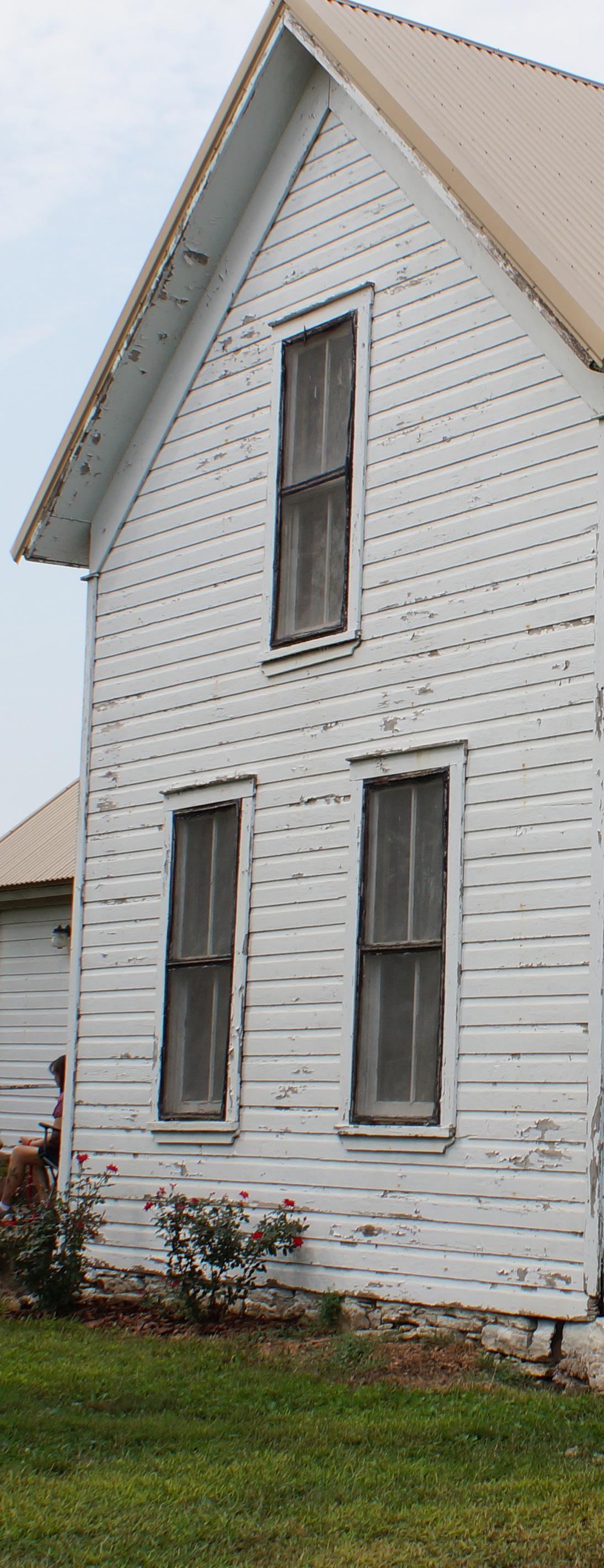

The 2025 Kansas Preservation Conference, held May 7-9, 2025, featured 19 sessions with a range of topics designed to educate and inform the state’s preservation community. The 100 attendees from five states met in venues across downtown Topeka and at the Kansas Historical Society complex. The conference also provided networking opportunities and highlighted resources available to property owners, businesses, non-profits, and government agencies.
A workshop geared toward Certified Local Government (CLG) and Main Street communities presented by national trainers kicked off the conference on Wednesday morning in the Kansas State Capitol. Concurrently, a hands-on window restoration workshop was held across town at the City of Topeka headquarters in the Cyrus K. Holliday building. The conference welcome reception was hosted at the state’s newest state historic site, the Charles Curtis House.
The session on Thursday and Friday, held in The Beacon, a stunning events center, focused on historic preservation including building scanning with LIDAR technology, funding sources, technological resources, tax credits, and social media and preservation advocacy discussion panels. Highlights included a keynote presentation by Andrew Gustafson of the Johnson County Museum, a Topeka African American history bus tour, and evening presentation by Elizabeth and Ethan Finkelstein from Instagram’s Cheap Old Houses, which included a meet and greet book signing opportunity.
The conference concluded on Friday with the Kansas Preservation Alliance’s annual awards presentation, at the Beacon ballroom. The awards program featured a brief history of the Kansas Preservation Alliance and presentation of 11 awards for completed preservation projects across Kansas.

Using stories from Kansas history to encourage new explorations of the past, understand our present, and appreciate the experiences of others; collecting, preserving, and providing access to the state’s material culture.
Sarah Bell, PhD, Museum and Education Division Director
Since my last Zephyr article earlier this year, the museum gallery has undergone a tremendous amount of change. Contractors built and painted walls. The new ramp is finished and provides great views of some favorite artifacts, along with brand new interactive experiences. We designed, fabricated, and installed our new special exhibit, a collaboration with KANSAS! magazine in honor of its 80th anniversary. We wrote an entire script and reviewed hundreds of production art panels. Our collections team is busily cleaning and prepping artifacts. And DI is installing exhibits!

As I write this more than a month ahead of our November 22 reopening, I am feeling a mix of excitement, exhaustion, and exhilaration. Our team has worked incredibly hard to get us to this point, and we are working even harder to finish the final touches.
Before I share what you can expect when you visit, I want to do a brief look at how far we have come.
The museum gallery closed on September 4, 2022. However, planning for the renovation started more than a decade ago. Our former executive director, Jennie Chinn, was the visionary and leader behind this renovation until her unexpected death in April 2022. Jennie selected Dimensional Innovations (DI) because she wanted the new museum to provide a “wow” experience for visitors—something that would meet the needs and expectations of 21st-century visitors. DI is a Kansas company but has done design and fabrication work for industries and companies across the country. Their creative, outside-the-box thinking was the perfect fit for our goals.
Before her death, Jennie set us on the path we are so close to completing, including deciding to structure the gallery thematically. A lot of research and planning had been completed, but her death understandably left a huge gap in our knowledge and understanding of the project.
I started in my role in late September 2022, and my first few months on the job were spent making sense of the work that had been done and what we still needed to do. I also did a lot of listening. A thematic structure is exciting and very dynamic, but it is also challenging to tell history that way. A clear outline finally emerged after many conversations with staff, historians, academics, community members, along with a lot of time spent reading and thinking. After that, it was just a matter of placing our stories and artifacts. And writing the many, many labels to go along with them!


When you walk through our gallery doors, you will enter a space that asks you to consider, What is Kansas? This question, along with accompanying questions, What was Kansas? and Why Kansas?, will set you up for exploring the stories of the new gallery. We know that everyone who walks into the museum comes in with a perception of Kansas. It might be positive, negative, or a mix of both. By asking what is Kansas, we are asking you to confront those perceptions and consider their origin. Yes, Kansas has tornadoes and sunflowers, is the Free State and the Wheat State, and is known for The Wizard of Oz. But it is also so much more than that. Kansas is stories of everyday people accomplishing incredible things. Kansas is the heartland, a crossroads, a place of innovation, and a celebration of numerous cultures and traditions.
The rest of the galleries center stories of Kansans who fought for a cause, made their home and a living, created communities, pushed for change, battled adversity, and celebrated their successes. Bleeding Kansas tells the story of
the land and resources from the earth. Connecting Kansas is centered on the 1880 AT&SF steam locomotive and the impact of the railroad. Changing Kansas shares stories of people pushing to make their society a better place.
There are interactives throughout the gallery to enable you to explore some of these stories in more depth, to bring artifacts to life, and to make you feel more connected to the past.
Save the Date: Museum Reopening November 22!
The thematic structure allows us to update the exhibits, making it a more dynamic space. We have included special touches like this mural by Stan Herd.
As you leave the gallery, we will ask you one final question: What is the Future of Kansas? History holds lessons for us that we can use to better understand who we are and to help us take

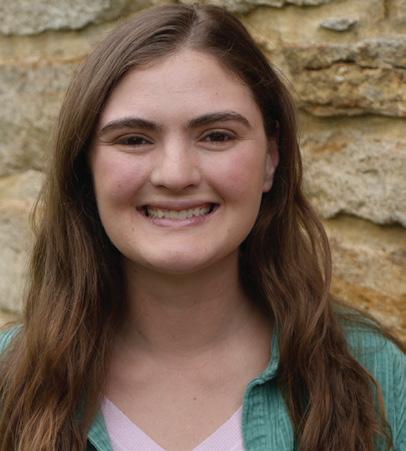
Mia Santarelli is the tour and volunteer coordinator at the Historical Society’s Kansas Museum of History. After moving from southeast Wisconsin to begin her college journey, she very quickly felt at home in Kansas. In 2017, Mia earned her bachelor’s degree in Italian language studies from the University of Kansas, and followed her curiosity about history to Savannah, Georgia, where she completed her master’s degree in art history. She focused her studies on photography and its development as a tool used to capture the multifaceted nuances of a single moment. Studying photographers such as Gordon Parks, Piergiorgio Branzi, and Robert Frank inspired Mia to continue exploring history through the lens of photography.
Being part of a museum team, Mia says, is a dream come true. She truly believes the role of tour and volunteer coordinator is the perfect convergence of two things that bring her joy—helping others and sharing the history that makes Kansas so unique. She is eager to serve this organization and surrounding communities through creating meaningful connections with those around her, while continuing to foster a welcoming environment for visitors and colleagues.

Call to Volunteers: Join us in Sharing Your
Kansas Historical Society volunteers play a vital role in preserving and sharing the unique stories that make up the history of Kansas. Your contribution as a volunteer can make a lasting impact on future generations, ensuring that the rich and complex history of the state continues to be shared. Many volunteer opportunities are available at the Kansas Historical Society—working alongside archeologists, assisting with archival projects, serving as a museum docent, and more. Join our team and help bring the fascinating history of Kansas to life for visitors from near and far!
Ready to take the next step? Contact Mia Santarelli, mia.santarelli@ks.gov; 785-272-8581, ext. 415; tour and volunteer coordinator for more details about how to get involved!

The Kansas Museum of History partnered with KANSAS! magazine in honor of the publication’s 80th anniversary for our first special exhibit in the renovated gallery. Celebrating KANSAS! features stories and images from across the state and is organized into the six tourism regions of Kansas, with an additional section highlighting stories that cover the entire state. A timeline of the magazine takes visitors from 1945 when it launched as To the Stars through its most recent issues under current editor Andrea Etzel.
The exhibit was a true collaboration between KANSAS! magazine and the Kansas Historical Society. Andrea was our guest curator for the exhibit, writing the script and helping to select images. Exhibits staff members Anne Dorcey and Nate Forsberg designed, fabricated, and installed the exhibit panels. Collections staff members Matt Renick and Nikaela Zimmerman selected artifacts to display. Archives staff members Lisa Keys and Jennifer Thompson scanned more than 300 images to go into the exhibit.
We are thrilled to showcase these stories of Kansas and the magazine as the museum’s first special exhibit since closing in 2022. This is a perfect pairing with the new gallery, and we hope it inspires you to get out and explore our beautiful state!
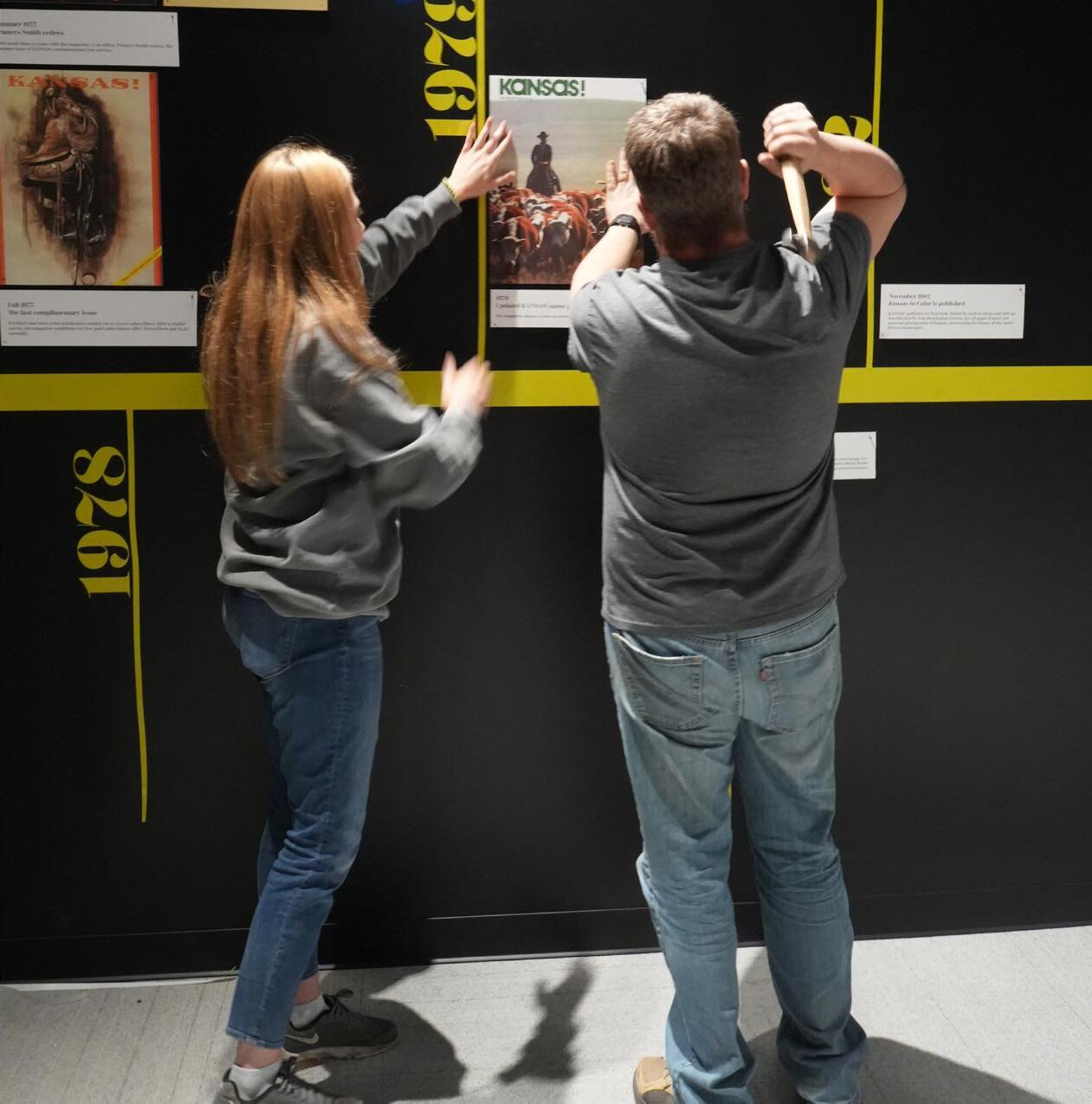
Featuring documentaries, YouTube videos, podcasts, and other audiovisual offerings that highlight engaging stories related to Kansas history.
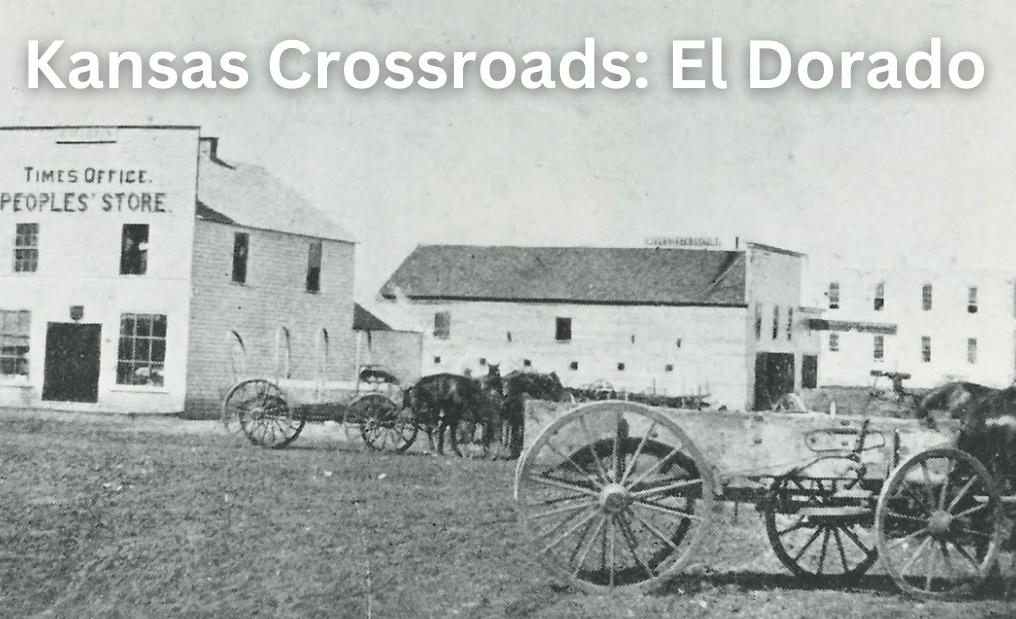

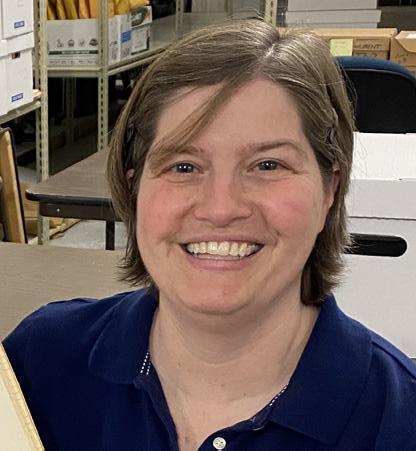
Going Home: Hidden Histories of the Flint Hills Going Home: Hidden Stories from the Flint Hills” tells stories of the nearly forgotten communities of Broughton, Volland, Skiddy, and Bodarc. These stories are told by local residents, historians, and students with the Chapman Center for Rural Studies at Kansas State University. Through narratives, historic photographs, and archival film footage, this 15-minute,18-second presentation introduces viewers to the people and history of the Flint Hills region. The project was produced by the Chapman Center for Rural Studies, College of Arts and Sciences at Kansas State University, in cooperation with the Flint Hills Discovery Center. bit.ly/4pyjJab
Kansas Crossroads: El Dorado

Filmmaker and history professor Ken Spurgeon and Suzanne Walenta, former curator of the Butler County Historical Society and Kansas Oil Museum, host this presentation on El Dorado in Butler County. From its beginnings in the 1850s through present day, El Dorado has played a significant role in oil and gas exploration, as highlighted in this video. Commentators include Deanna Bonn, host of the “Everyday El Dorado” podcast and Loren Jack, operations manager of Albert Hogoboom Oil Field Trucking. Fall River Productions, in association with the Butler County Historical Society and Kansas Oil Museum, cited the Kansas Historical Society as a research source in this 31-minute, 25-second video. bit.ly/4mntdCa
Cinematographer Nick Abt of ABT Films narrates this 22-minute,58-second video featuring the beauty and history of the Medicine Hills region in Barber County. Part one looks at the physiographic region known as the Gypsum Hills and tells about the attempted bank robbery of the Medicine Lodge bank in 1884. In part two, Kiowa historian Eugene Stumblingbear talks about the history of the Kiowa Tribe in the area. Part three highlights present-day Barber County with its festivals, ranching, and mining. Commentary in this presentation was provided by John Dixon, former director of the Stockade Museum, the late author and historian Roger Ringer, and rancher Robert Larson. bit.ly/46FnfrI
On May Day 2001, Teresa Coble joined the Kansas Historical Society as the retrieval desk attendant in the research room. Teresa had never before been in an archives. Undaunted, she applied her usual ebullience and enthusiasm in learning the dayto-day operations. She continues to learn about bygone call numbers and collections seemingly unused.
She was promoted to reference librarian and digital assistant around 2012, helping patrons in the research room and selecting and preparing items for Kansas Memory, the Historical Society’s online digital archives.
Teresa graduated from Emporia State University with a library science degree in
2018. That same year, she was hired as acquisitions archivist. She helps to coordinate new special collections to the State Archives. In this position, she has the opportunity to meet a wide range of people, each with a unique story to tell. She enjoys helping to capture those stories to be preserved and shared with generations to come.


Collecting, preserving, and providing access to the state’s history through unpublished materials, personal papers, audio-visual materials, and government, organization, and business records.
Adam Hodge, PhD, Head of Reference
For 25 years, the state of Kansas used a train car to deliver fish to lakes and streams across the state. A special exhibit on display in the State Archives research room through the end of November tells the story of the car named Angler No. 1. Photographs, a floor plan, a map, and other documents highlight the life and times of the rail car. Indeed, the State Archives holds many records that illuminate the history of the fish car and fisheries management in Kansas, including reports of the fish commissioner (later warden), newspaper articles, and governor’s correspondence.
From 1906 until 1929, Angler No. 1 was the primary way the Kansas Fish and Game Department delivered fish raised at the state hatchery in Pratt to waterways across the Sunflower State. To satisfy Kansas anglers’ growing demand for sportfish—primarily bass, panfish, and catfish—the Pratt facility produced roughly 360,000 fish per year by the early 1920s. Individuals who intended to stock public water could submit an application to the state fish warden and pick up their order from the fish car free of charge. Seeking to improve recreational fisheries and concerned about the effects of dams, pollution, and other developments on local waterways, anglers and sportsmen’s clubs overwhelmed the warden with applications.
From the inception of the Kansas fish commissioner position in 1877 until Angler No. 1 was acquired in 1906, department personnel rode rail lines with fish in cans, distributing the fish at the train stations. While this generally got the job done, it was fraught with challenges: the rail lines required frequent train changes; schedule deviations often led the staff to miss the train; and a limited volume of fish could be delivered in a single trip. Several commissioners operated personal hatcheries, but the ongoing push for a state facility did not bear fruit until 1903, when land was donated for the Pratt hatchery. The hatchery grew rapidly thereafter, and the fish warden successfully appealed for funding to purchase a dedicated fish car to make deliveries.
Warden D. W. Travis paid $7,276.98 for a fully-outfitted fish car from the Hicks Car Company of Chicago in late 1906. A remodeled 1880s-style car of wooden construction, Angler No. 1 featured a dozen 200-gallon tanks for carrying fish as well as accommodations for the staff, including a kitchen, toilet, dining room, and several berths. Existing technology did not allow for efficient and inexpensive aeration or temperature regulation, so the car only operated during the milder spring and fall seasons. At first, auxiliary tanks were used to change the water during stops at the train stations. Later, an air line was rigged from the air-brake system to pump oxygen into the tanks. Eventually, a small compressor powered by a gasoline motor was installed to provide aeration as the car was transferred between trains. The car could reasonably carry 8,000 smaller fish in its early days; its capacity reached 14,000 by its retirement. When not in use, Angler No. 1 resided at a car house built alongside the Atchison, Topeka and Santa Fe (AT&SF) Railroad approximately one-half mile north of the Pratt hatchery. Staff filled the fish and auxiliary tanks using a well pumped by a gasolinepowered engine while a team used a wagon to

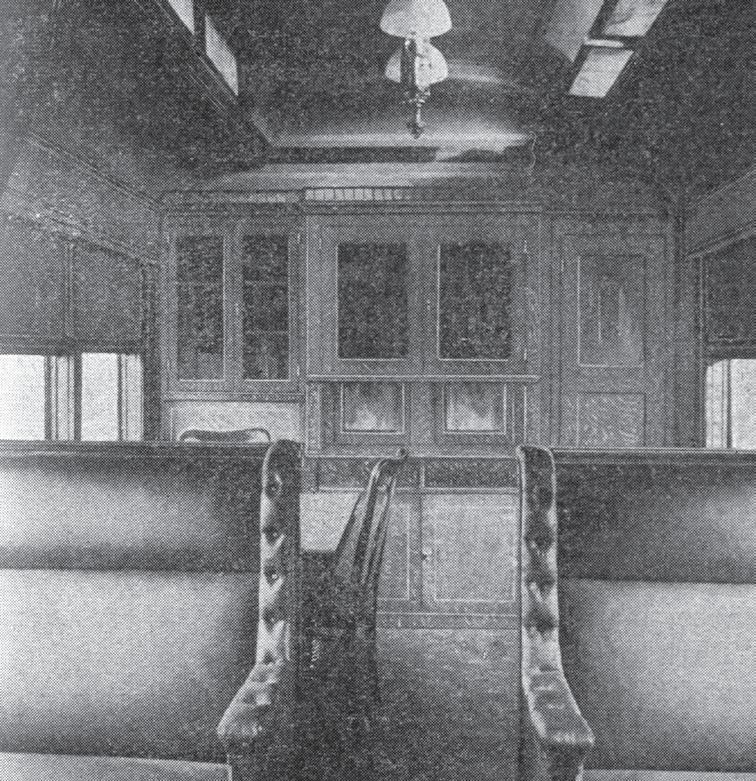

haul fish taken from the hatchery ponds in cans to Angler No. 1. The fish car saw heavy use during its lifespan, carrying an average of 9,600 fish on 29 trips to 102 of Kansas’ 105 counties during the fall 1913 and spring 1914 stocking seasons. Local newspapers often reported its anticipated and recent visits, providing readers with information about where the fish were stocked and how to order their own.
Angler No. 1 underwent considerable work in 1915 after nearly a decade of heavy use, as water had rotted its wooden floor. After missing the fall stocking season while being remodeled and outfitted with a new steel underframe at the AT&SF shops in Topeka, the fish car resumed activity, delivering approximately 280,000 fish statewide during the spring of 1916. It remained integral to the Fish and Game Department’s operations into the 1920s, delivering more than 456,000 fish to 733 applicants on 24 trips in 1925.
A changing transportation landscape brought about the retirement of Angler No. 1 in 1929, when it was salvaged and junked in Topeka. The car was aging and needed replaced, but the estimated cost of $60,000 was unfeasible for the state. Meanwhile, railway service was becoming problematic as many trains were being discontinued. The department began experimenting with truck deliveries as automobile technology advanced and the state’s road network grew and improved. The fish and game department purchased an REO Speed Wagon in 1927 that could carry up to 4,000 fingerlings or 20,000 fry per trip, and added a Thuma live-fish transport truck to its fleet by 1936, which could reportedly carry up to 50,000 fish at a time. Today, all the fish delivered to Kansas’ public waters are transported by truck.
Hodge recently shared the story of Angler No. 1 with Kansas Public Radio. Listen at bit.ly/kprfishontherails
By Teresa Coble, MLS, Acquisitions Archivist
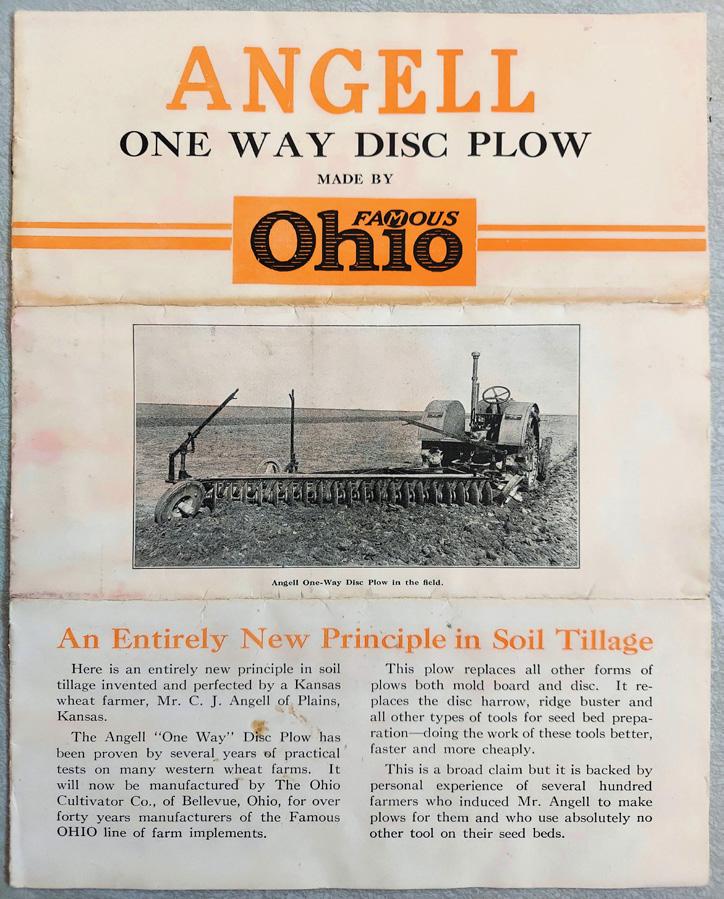
The Charles J. Angell, Sr., collection includes photographs, correspondence, advertisements, sketches, and newspaper articles related to Charles J. Angell, Sr., inventor of the one-way disc plow. Charles and his son, Francis Angell, developed the one-way disc plow in the mid-1920s. Together, they built about 500 plows on their Meade County farm, with the plow becoming the most commonly used tillage implement on the plains. The plow set all disks at the same angle or “one-way” to increase tilling efficiency. Farmers liked that it plowed faster and broke up hard soil easily, but its overuse created a fine, dusty layer that quickly blew away in heavy winds. Charles later sold the rights to the plow to the Ohio Cultivator Company.
To view the Charles J. Angell, Sr., collection, please visit the State Archives research room in Topeka and request reference unit ID 532142. Learn more about Charles J. Angell, Sr., from Kansapedia at bit.ly/kshskpangell.
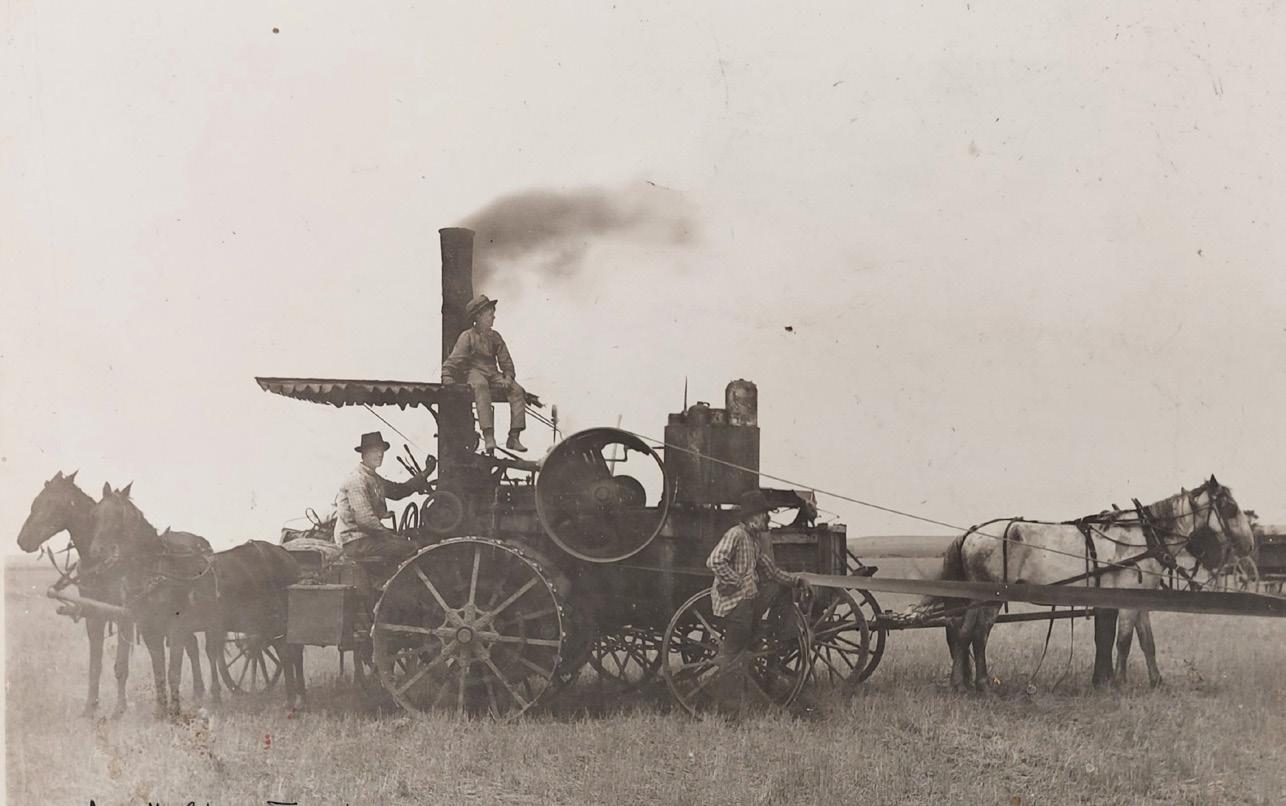

Fish on the Rails, visit: State Archives Research Room 6425 SW 6th Avenue,
Preserving and protecting the state historic sites placed under the care of the Historical Society; educating visitors and classes through exhibits, exterior interpretation, and programming.
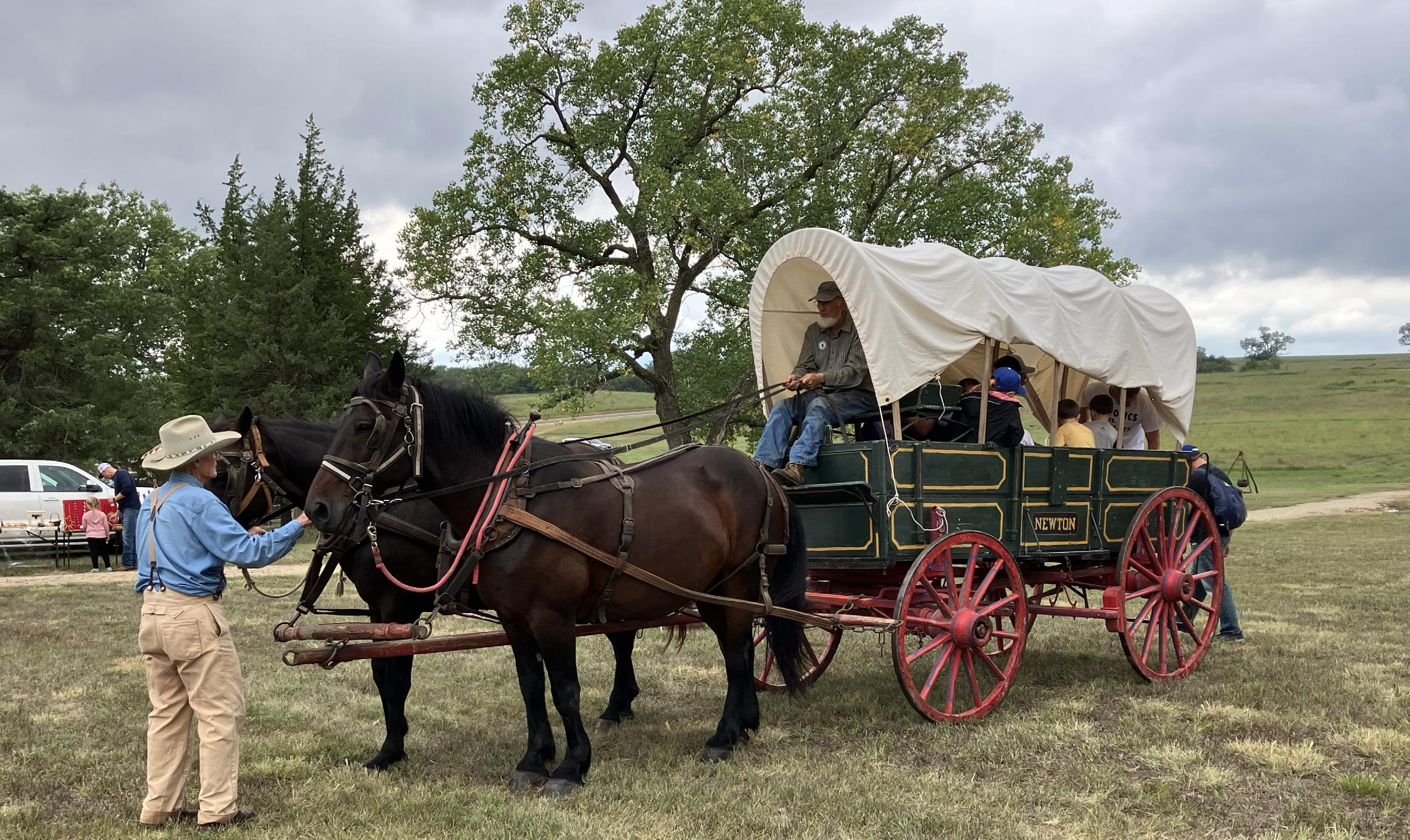
ALONG THE WESTWARD EMIGRANT TRAILS

“ The station provided food, lodging, and fresh horses to riders on the Pony Express,
The only Pony Express station on its original site in its original dimensions, Hollenberg Pony Express Station is near Hanover. Gerat H. Hollenberg sold trading goods to travelers on the trails before relocating east of Hanover in Washington County. He built his frame structure of walnut on a stone foundation around 1857 or 1858, as both home and business. He and Sophia Brockmeyer married in 1858, and the couple made their home in four rooms on the ground floor, with two more rooms for a grocery, post office and tavern. The second-floor provided an open sleeping area for stage employees.
during its operation from 1860 to 1861.”
A blacksmith shop and stable housed up to 100 head of horses and oxen. The station provided food, lodging, and fresh horses to riders on the Pony Express, during its operation from 1860 to 1861. The station was purchased by the State of Kansas in 1941. Listed in the National Register of Historic Places in 1961, it became a state historic site in 1966.

Plan Your Visit!
Hollenberg Pony Express Station State Historic Site 2889 23rd Road, Hanover KS 66945-8901
Four miles north of U.S. 36 on K-148, one mile east of Hanover on K-243
Visit: 10 a.m. – 5 p.m. Wednesday – Saturday, 1 – 5 Sunday Seasonal site | Admission is free!
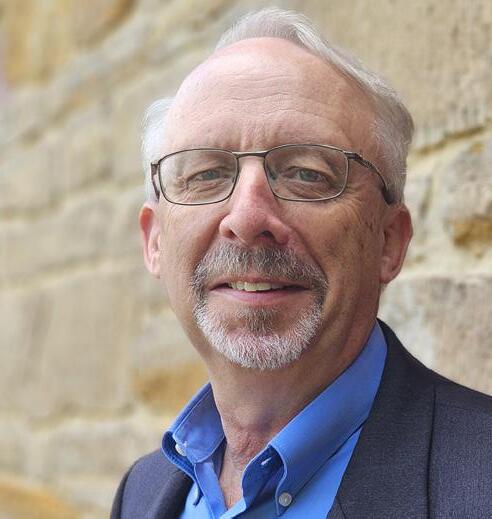
Born and raised in Nebraska, Fred recently joined the Historical Society as state historic sites supervisor. He earned degrees from the University of Nebraska-Lincoln and Eastern Illinois University. He has worked in museums and historic sites in the Midwest and North Carolina. He enjoys learning and sharing history with audiences of all ages and looks forward to discovering more about the Kansas State Historic Sites.

Barb Ficke joined Hollenberg Pony Express Station at the beginning of the 2024 season as site administrator. She grew up near Bremen, a few miles from Hollenberg station. The site’s rich history has long been a fascination for her. She enjoys sharing this history with visitors from across the United States and beyond who come to learn more about the Oregon and California Trails and the Pony Express. During her first season at Hollenberg, she welcomed visitors from 46 different states and eight countries. They often bring along their own stories as they follow the trails.
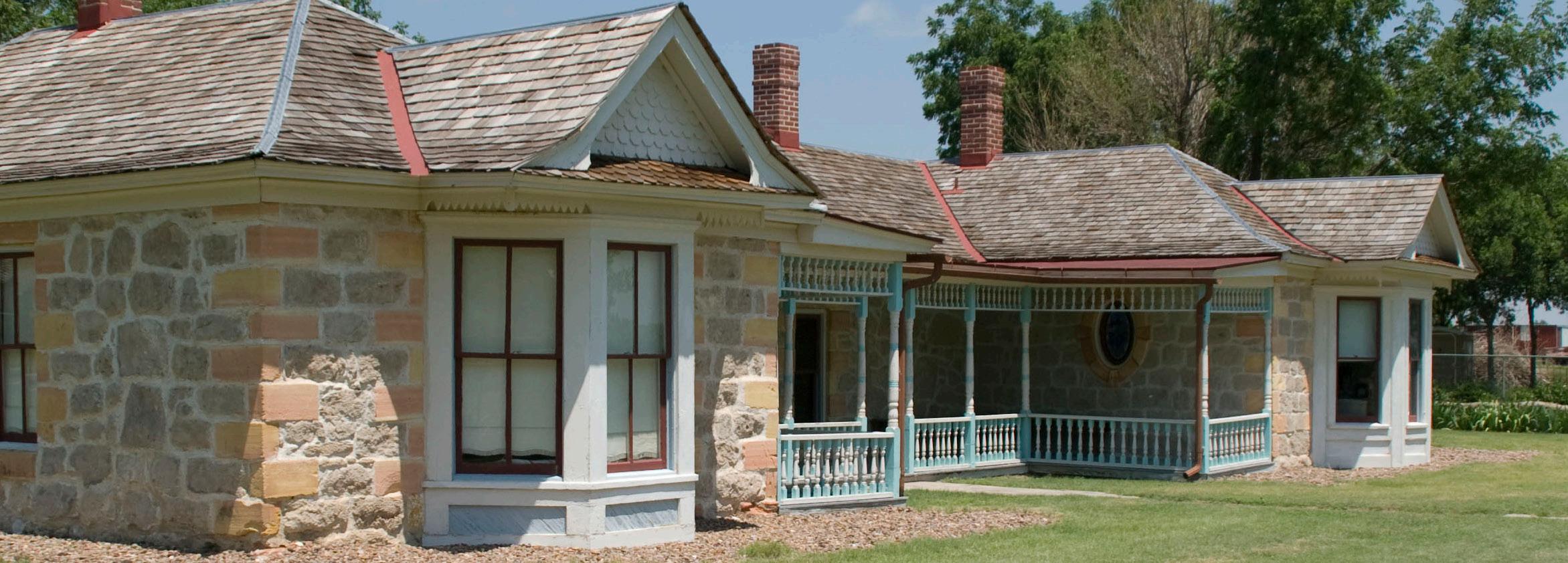


Last day to visit for the season - October 18, 2025
Hollenberg Pony Express Station, Hanover Cottonwood Ranch, Studley
Last day to visit for the season - October 19, 2025
First Territorial Capitol, Fort Riley Grinter Place, Kansas City
Mine Creek Civil War Battlefield, Pleasanton Pawnee Indian Museum, Republic Red Rocks, Emporia


Open Year Round
Constitution Hall, Lecompton
Fort Hays, Hays
Goodnow House, Manhattan
Kaw Mission, Council Grove
Last Chance Store, Council Grove
Shawnee Indian Mission, Fairway
Drive-Through Sites Open Year Round
Marais des Cygnes Massacre, Trading Post Pawnee Rock, Pawnee Rock
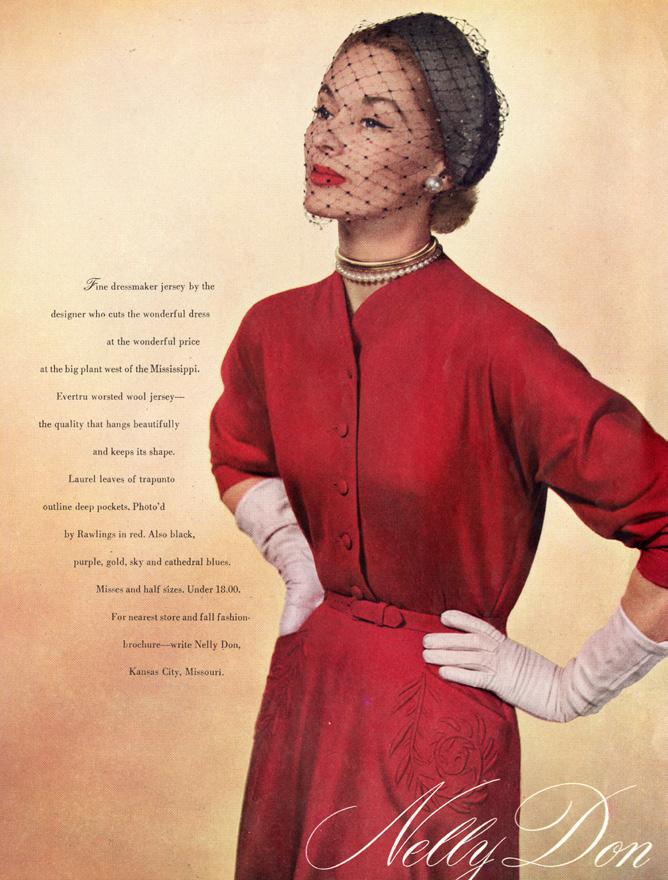

Ellen “Nell” Quinlan Donnelly Reed was a fashion designer and businesswoman. Born in Parsons, Labette County, in 1889, she learned to alter her sister’s outgrown clothing for her own wear, then made dresses for herself, family, and friends. She convinced a Kansas City, Missouri, department store to carry on consignment her creations, focused on replacing the frumpy housedress. On this day in 1916, she started the Donnelly Garment Company. By the 1920s, Nelly Don had become one of the largest manufacturers of women’s clothing in the United States, Canada, and Europe. She sold her interest in the company in 1956, which continued to manufacture clothing through the 1960s and 1970s. After declining sales, the company went bankrupt in 1978. Nell Donnelly Reed died in 1991 at the age of 102. The Nelly Don dress is in the museum collection.

After a devastating defeat at the Battle of Westport on October 23, 1864, Confederate Major General Sterling Price’s troops crossed the border into Kansas and headed for Fort Scott. Early on the morning of October 25, their heavily loaded wagons became bogged in the muddy Mine Creek as Union forces closed in on them and a cavalry battle ensued. Because the Union troops had superior fire power, the Confederate line began to collapse, and Price’s troops continued their retreat. The Confederates passed south out of Kansas never to return. Kansan Samuel Reader, who was captured at the Battle of Westport, was being held prisoner during at Mine Creek. His eyewitness illustrations depicted the heat of the battle. Reader later escaped. Mine Creek Civil War Battlefield State Historic Site now features a visitor center, museum, and interpretive trail. Learn more details about the battle at bit.ly/47oklb2

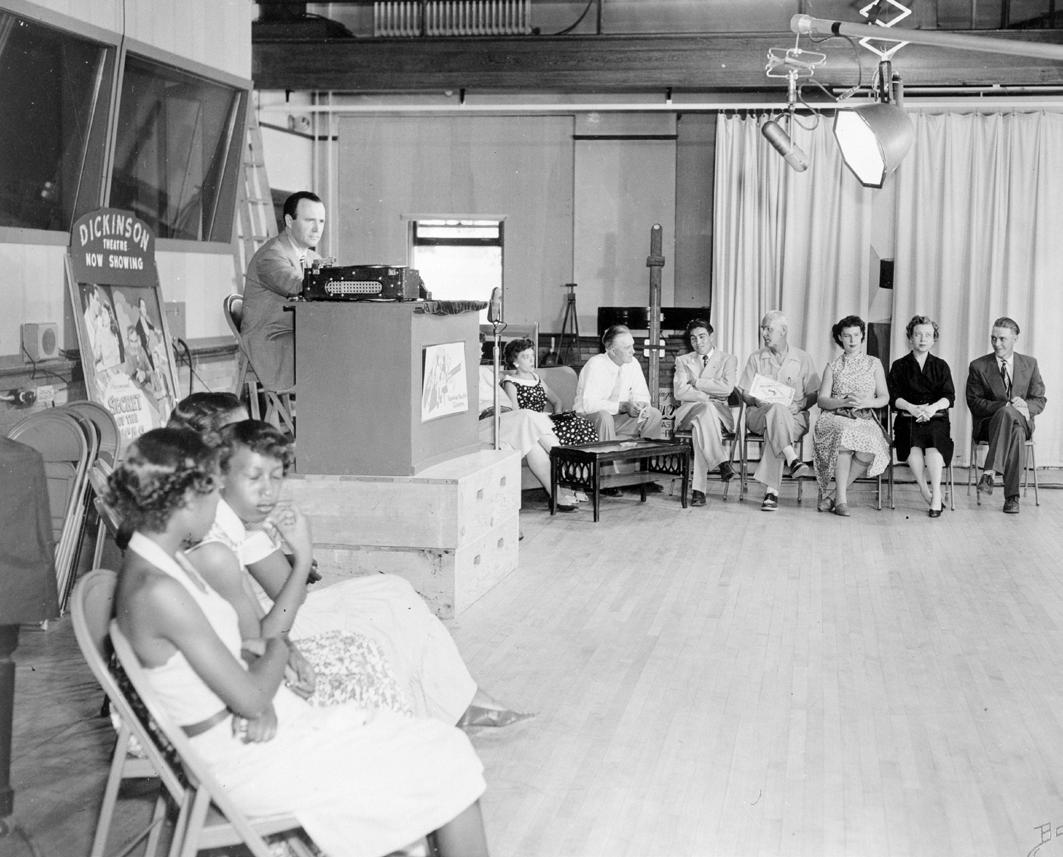
WIBW-TV, the first television station in northeast Kansas, began broadcasting on this day in 1953. Senator Arthur Capper owned WIBW-AM before licensing WIBW-TV. From studios in west Topeka, the CBS affiliate added local news, weather, entertainment, and remote sports programming. The station helped alert viewers of an approaching F5 tornado that ripped through Topeka on June 8, 1966. Host Mike Jerrick, actor Gordon Jump, journalist Bill Kurtis, sports announcer Fred White, and Frank Wizarde or Whizzo, were all WIBW-TV alums. The station donated its RCA TK-11 studio camera to the museum in 1984. Read more about WIBW-TV at bit.ly/47njtUb
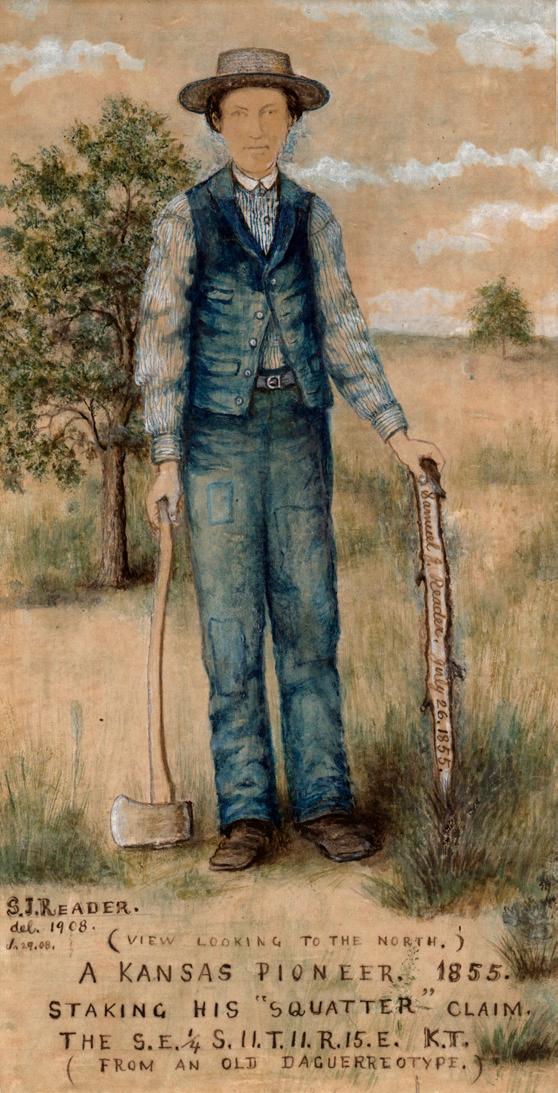

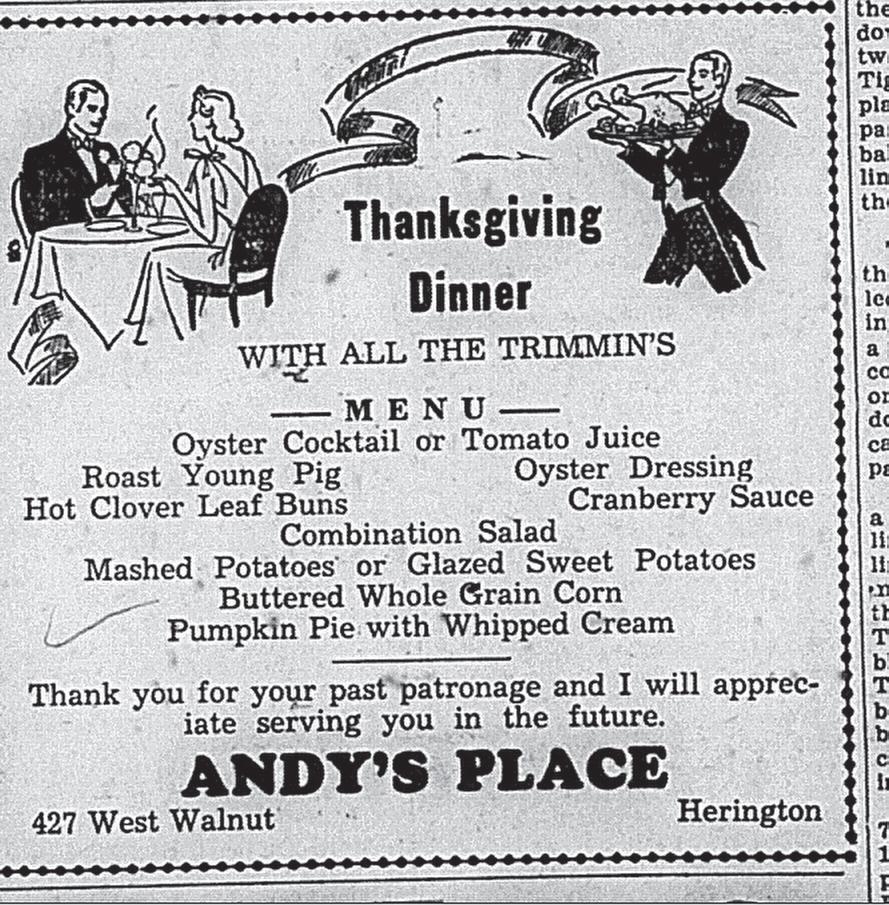
11–23
Thanksgiving has long been celebrated in Kansas. President Abraham Lincoln proclaimed the holiday in 1863, observed on the last Thursday of November. However, President Franklin D. Roosevelt proposed moving Thanksgiving to November 23, 1939, to boost sales during the lagging economy, which he pitched as more time for Christmas shopping. Retailers applauded the move; but Kansans said no “no thanks to franks,” and some celebrated both days. In 1941, Roosevelt announced Thanksgiving would return to the last Thursday of November. Learn more about Thanksgiving in Kansas at bit.ly/42GVEUO

When the committee of the Kansas Editorial Association gathered at the office of the Topeka Commonwealth on this day in 1875, they committed to saving the history of the state. They organized the Kansas State Historical Society, filing articles of incorporation the following day. Floyd Baker accepted the position of secretary; a title he held a few weeks before resigning. Franklin G. Adams of Topeka quickly brought energy and enthusiasm to create “a living useful, permanent public institution” with collections representing a breadth of Kansas history. Newspaper editors committed to donate issues from across Kansas, making them members of the Society. On the Society’s first anniversary, newspapers reported that the agency was occupying “a corner alcove in the State House,” “somebody has boarded up the area adjoining the entrance to the Senate gallery and labeled it, ‘State Historical Society’ on the door,” “The society has a good start, and in time will be a valuable institution. Nearly all the editors of the state are members, besides others.” Today the Society celebrates 150 years collecting and preserving the history of Kansas. Read more about the Kansas Historical Society at bit.ly/4n3kXaP
12–13

The Kansas territorial legislature chartered what became the Atchison, Topeka & Santa Fe Railway on February 11, 1859. Cyrus K. Holliday was the company’s first president. Drought and the Civil War delayed construction. President Abraham Lincoln signed the Pacific Railway Act of 1862, expanded in 1863, to fund transcontinental railroad construction, planned to be completed in 10 years. The Santa Fe exceeded its deadline, completing 406 miles of track, arriving five miles beyond the Colorado border on this day in 1872. The company continued its path to the Gulf and Pacific coasts. Learn more about the Santa Fe Railway at http://bit.ly/4hc0uzt
12–28

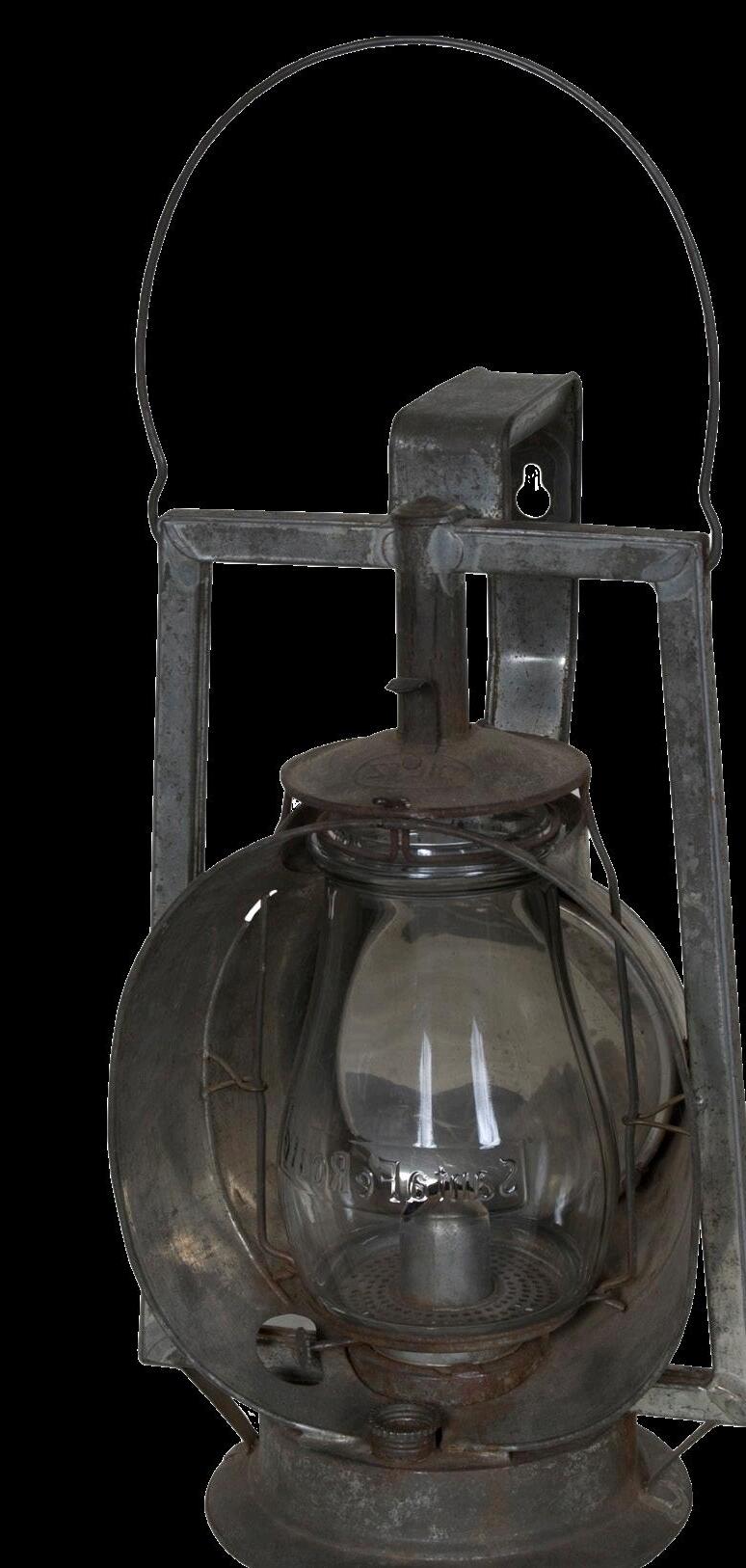

A non-profit supporting and promoting the work of the Historical Society through fund raising, fund management, membership, and retail.
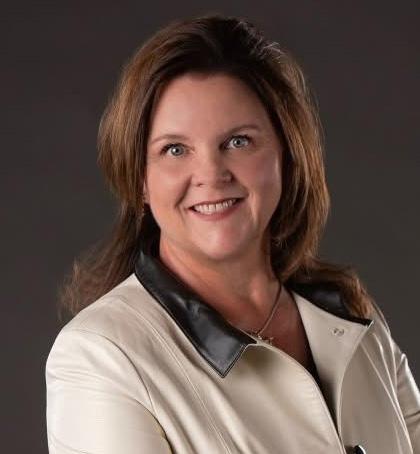
After years of dedicated effort, the Kansas Museum of History is preparing to reopen its doors with a renewed spirit and a revitalized vision. The focus of this transformation has been the exhibits and the complete remodel of the museum—an endeavor that reflects the passion and perseverance of the Society’s staff. Their commitment to preserving and presenting Kansas history has been unwavering, and they will undoubtedly take immense pride in the new space, perhaps more than we can truly appreciate.
Behind the scenes, the Kansas Historical Foundation has played a vital role as the fundraising arm of the state’s historical efforts. Our mission is to secure the future of Kansas history through charitable gifts and financial support. These contributions ensure the preservation of our archives, the continuation of educational programming, and the sharing of Kansas’ rich history for generations to come. As we look to the future, we invite you to be part of this journey—celebrating our past, embracing the present, and shaping the legacy of Kansas for tomorrow.

Celebrate the Kansas Historical Society’s 150-year history with specially designed items available for only a short time. Each piece is handcrafted to order by Kansas artisan Pete Hodge. He created these collectibles with locally sourced materials and traditional techniques. These exclusive creations are not mass-produced—they are made with care, precision, and a personal touch that reflects Pete’s dedication to quality craftsmanship. This collection is available only through the end of the year, making each item a seasonal treasure. Order online at: store.kshs.org
November marks National Philanthropy Month, a time to reflect on the generosity of Kansans who support the important work of the Kansas State Historical Society. This season often brings many requests for donations, and we truly appreciate your consideration. The Kansas Historical Foundation exists to ensure that the work of the Society continues to benefit future generations of Kansans through the generous financial support of individuals, corporations, and foundations across our great state, who value the Society’s research, education, and historic preservation efforts. The funding for the purchase of the Funk airplane is one example of your generous giving. Find out more by contacting Caryn Kramer at caryn.kramer@ks.gov; 785-272-8681, ext. 204.



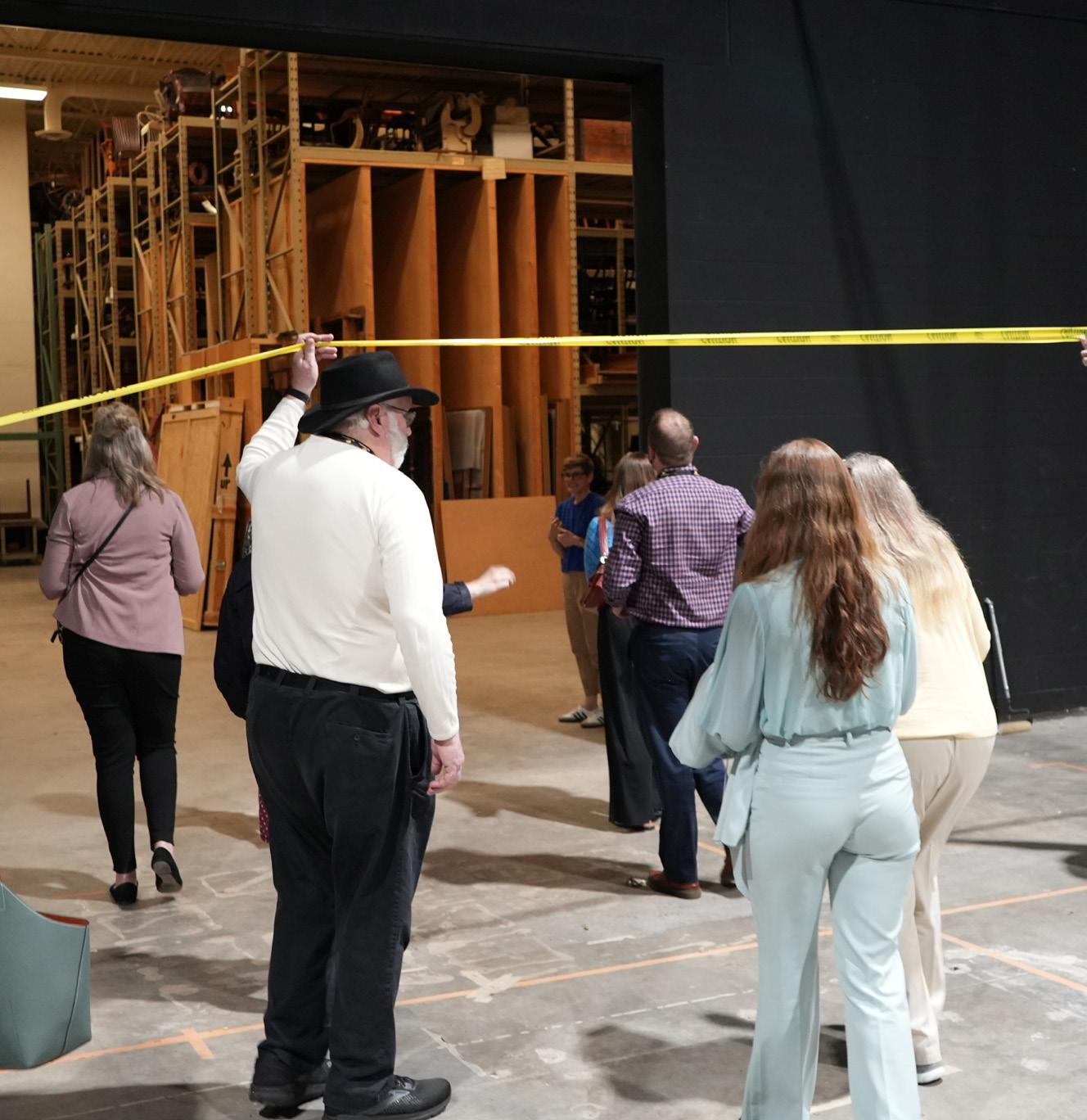


Find us in recent publications, the news, and social media!
TOPEKA CAPITAL-JOURNAL “I AM JUST BLOWN AWAY”: VISITORS GET SNEAK PEEK AT KANSAS MUSEUM OF HISTORY
Reporter Tim Hrenchir joined the behind-the-scenes tour at Museum After Hours to hear comments about progress on the new exhibits. Visitors were able to glimpse installation work that had just begun. They expressed pleasure seeing that so many different stories would be included, and that they could view some familiar items, like the Longren biplane and second floor of the cabin, up close. They heard descriptions from Historical Society exhibit director Nate Forsberg and project manager Beau Easley of Dimensional Innovations in Overland Park. bit.ly/4mzSlFX
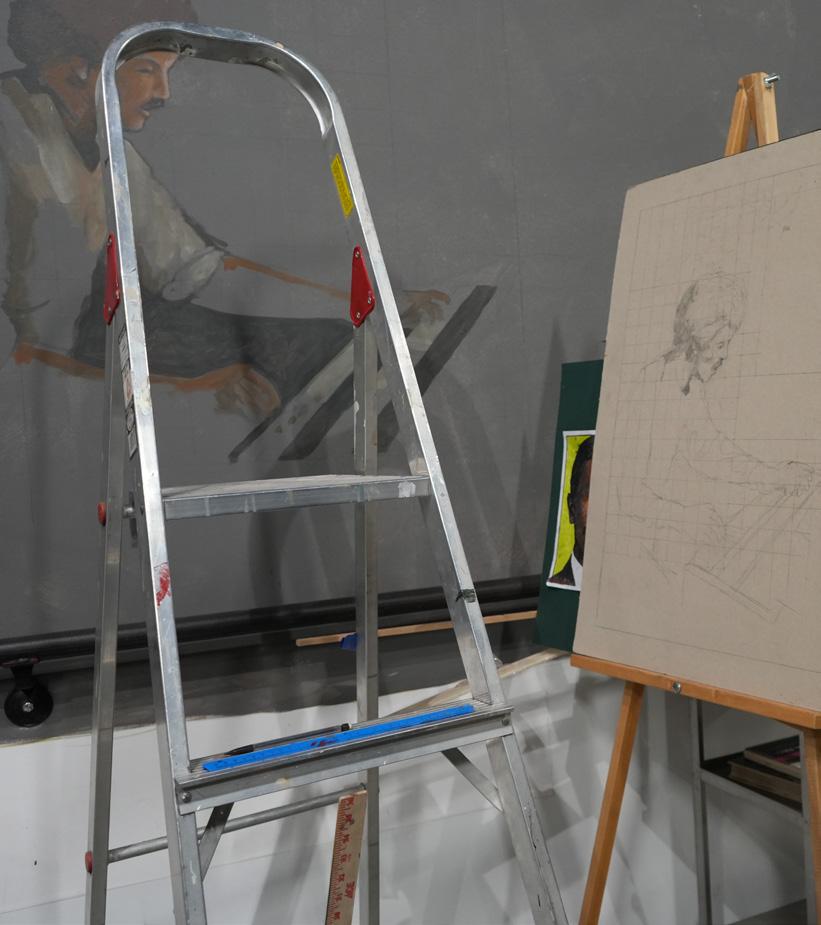
WIBW-TV
KANSAS MUSEUM OF HISTORY ANNOUNCES
REOPENING DATE, SHOWCASES NEW MURAL Multimedia Journalist Claire Decatur highlighted the new mural by artist Stan Herd in a recent story on WIBW-TV. The artist completed a large mural as backdrop to the 1880s steam locomotive in 1986. He agreed to paint another mural for the new exhibit spaces that would highlight Kansas’ impact on national history. “This will be one of my most important legacy works, to paint my history, my family’s history, and Kansas history,” Herd said. bit.ly/4nJ9kGO
KANSAS PUBLIC RADIO
SAVING KANSAS HISTORY MUSEUM’S CIVIL WAR FLAGS IS COSTLY
Host Matthew Algeo recently highlighted the historic Civil War battle flags in the museum collections that are in desperate need of conservation. Most of the flags were collected by veterans and donated to the Kansas Historical Society more than 100 years ago. Algeo interviewed museum curator Boone Dodson to learn why the delicate repair of a single flag can cost tens of thousands of dollars. Dodson said the restoration process takes “specialized backing, specialized glass weights,” to stabilize these rare, fragile silk flags so that they can be displayed for visitors to see. bit.ly/3KhuUnm
WIBW-TV
SANTA FE TRAIL SYMPOSIUM
As guests on WIBW-TV’s Eye on NE Kansas, Mark Brooks, site administrator at Kaw Mission State Historic Site and Last Chance Store State Historic Site in Council Grove, joined News Director Melissa Brunner to provide information about the special commemoration of the history of the Santa Fe Trail. Brooks and Sharon Haun, who produced the Voices of the Wind People pageant, invited viewers to the nine-day symposium with speakers, meals, and activities. bit.ly/4my2vqD






